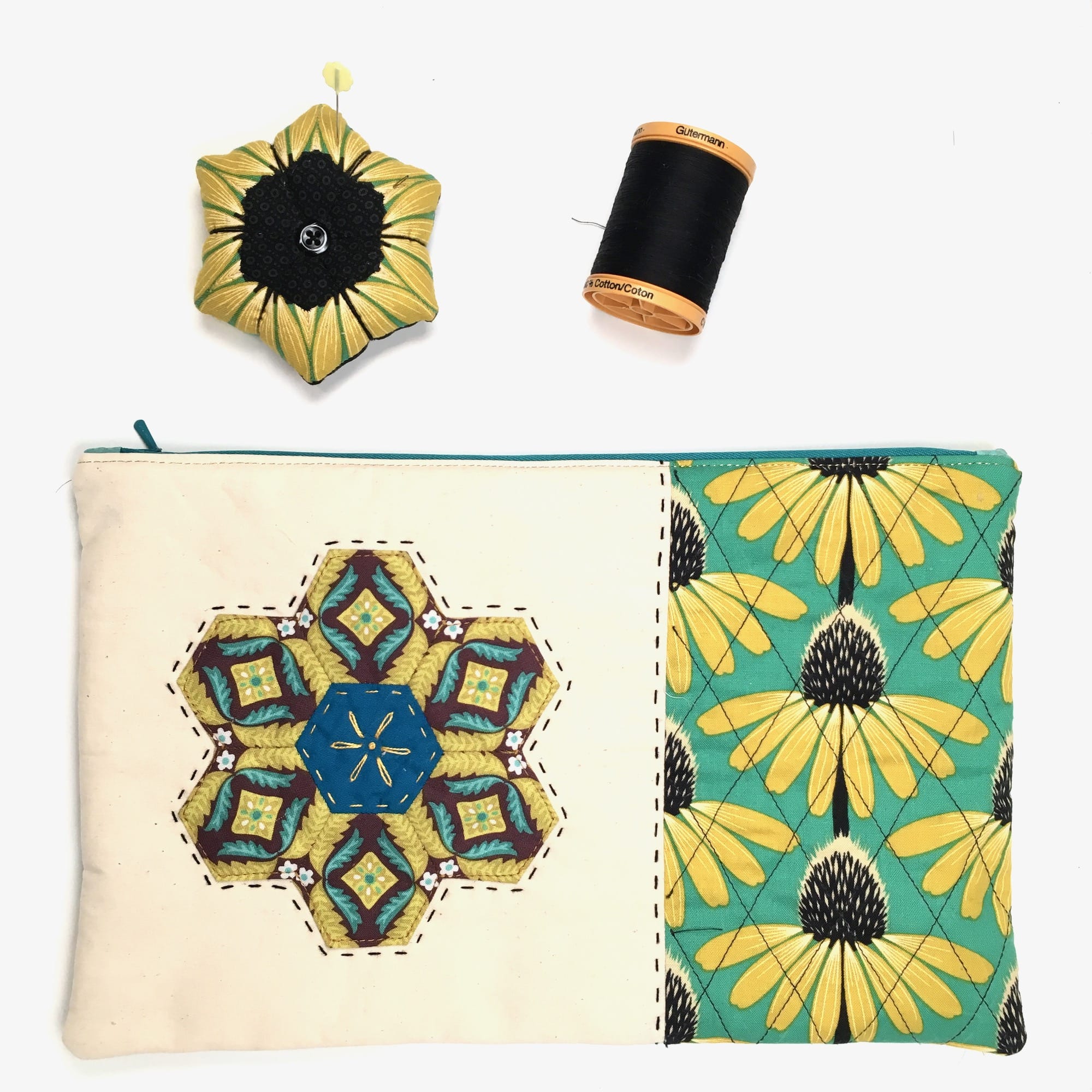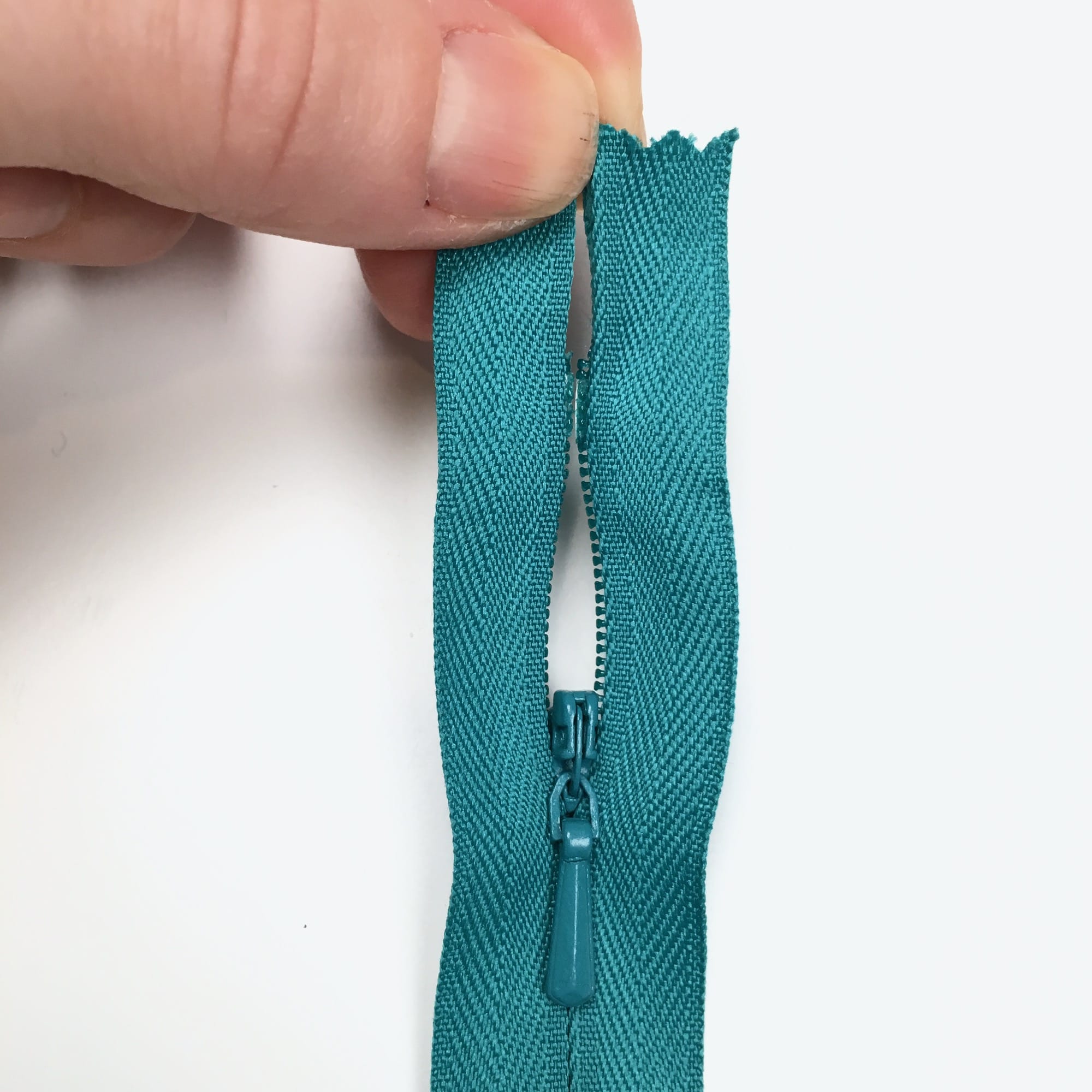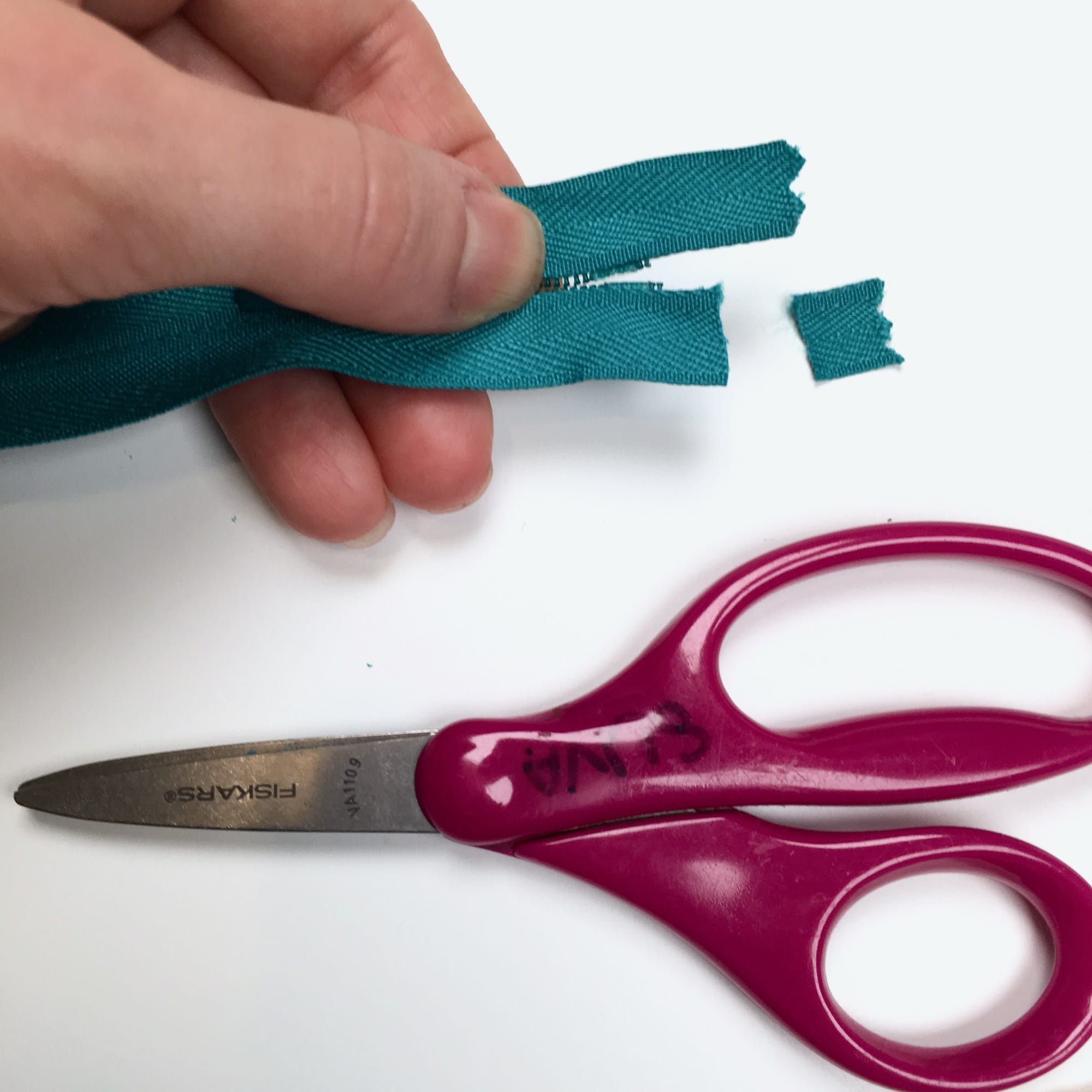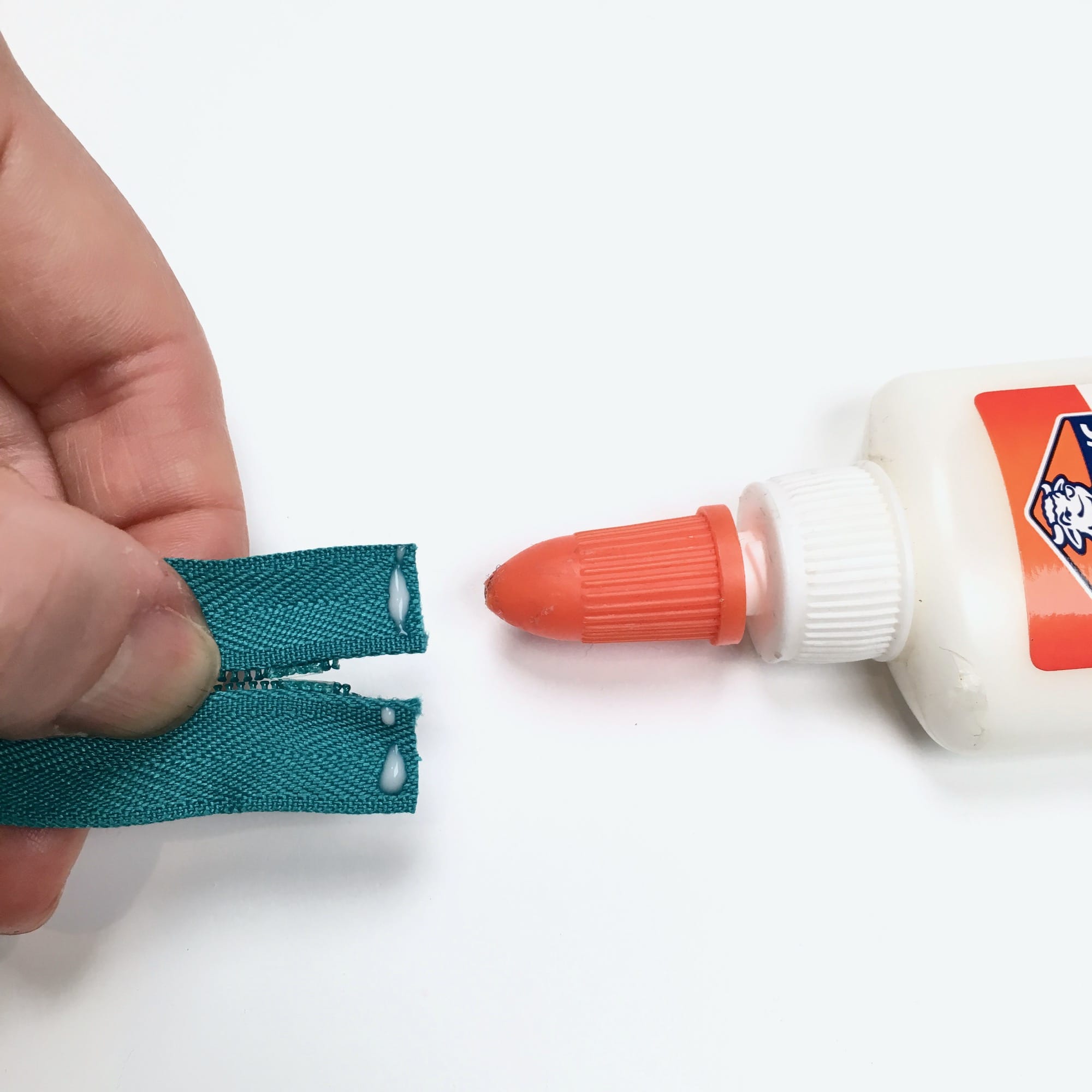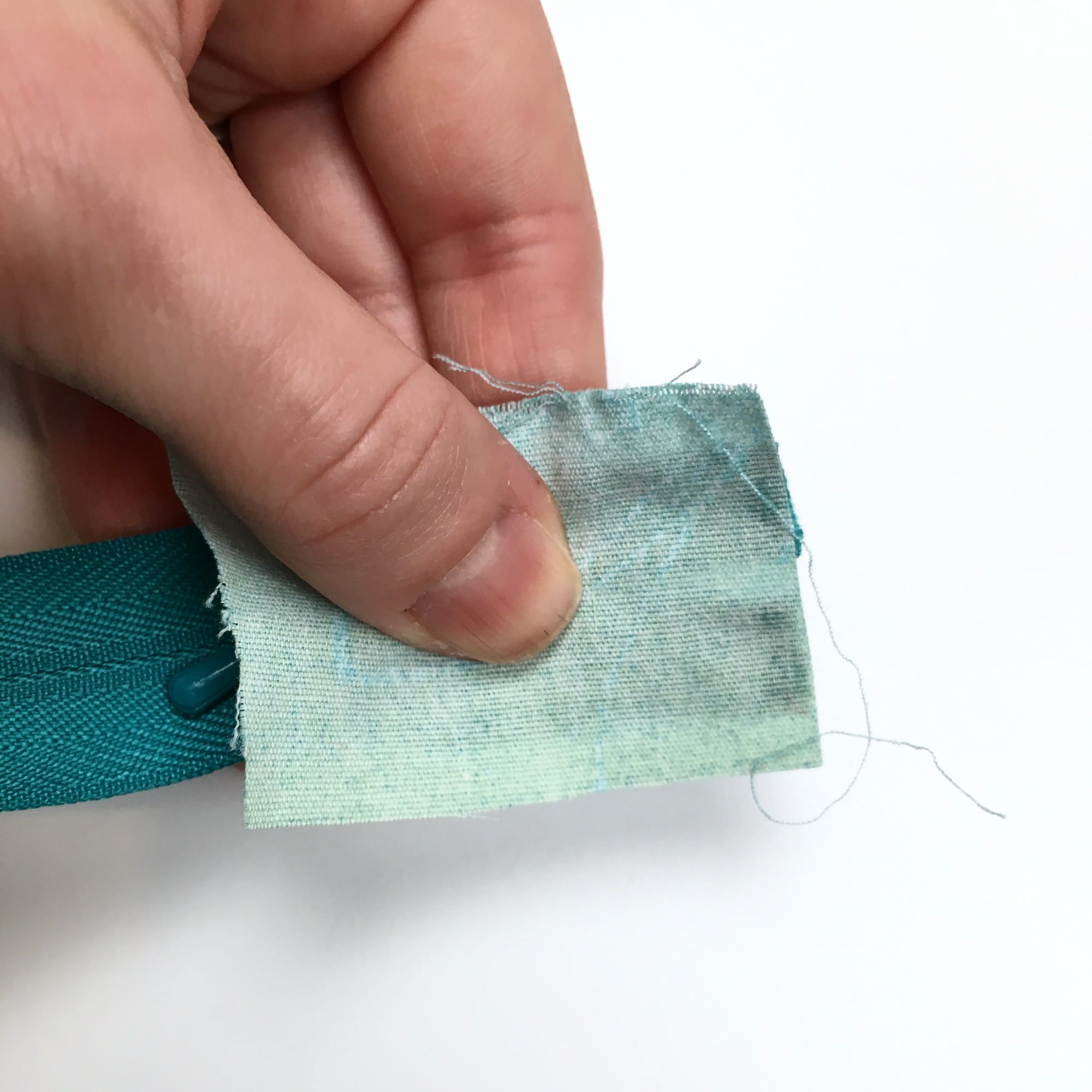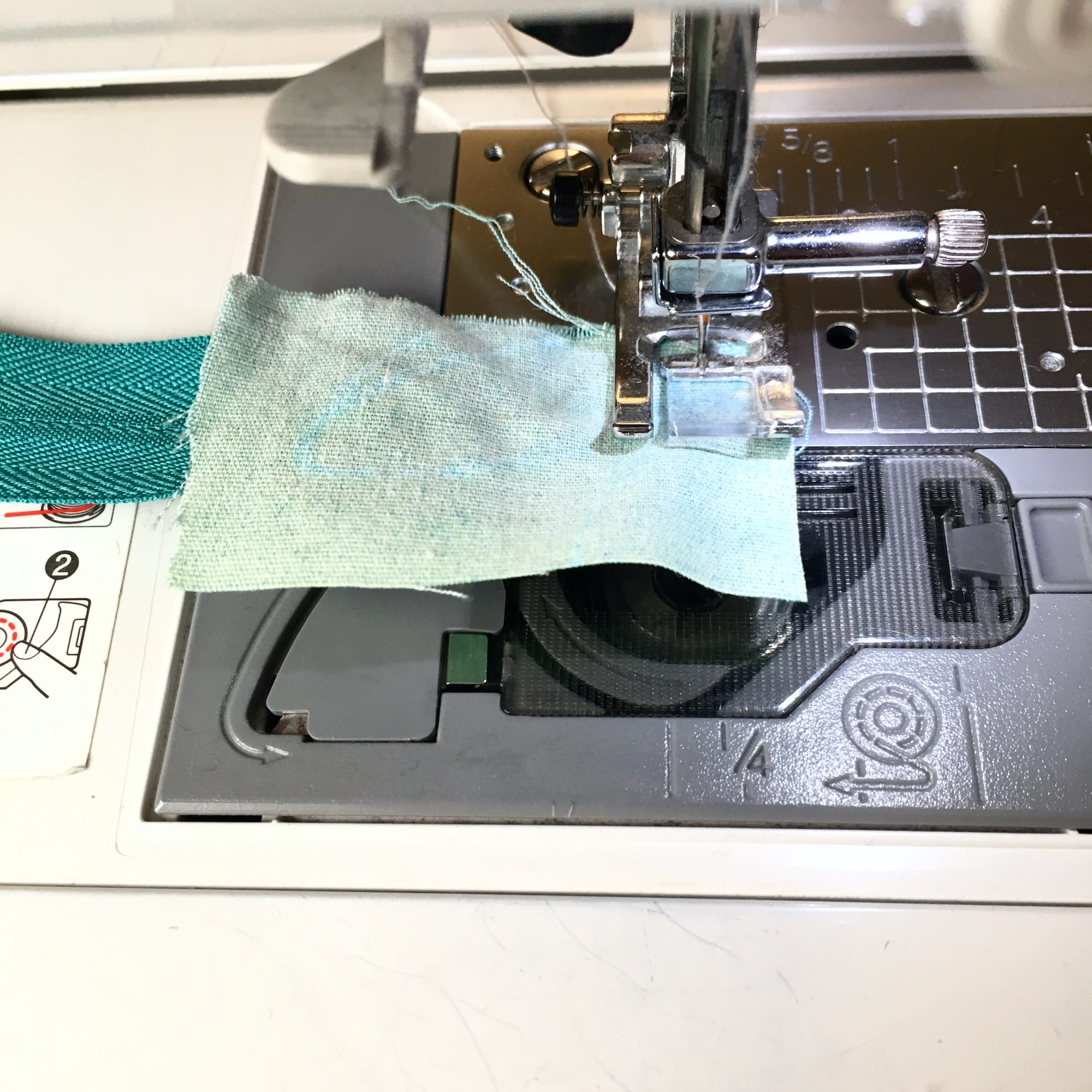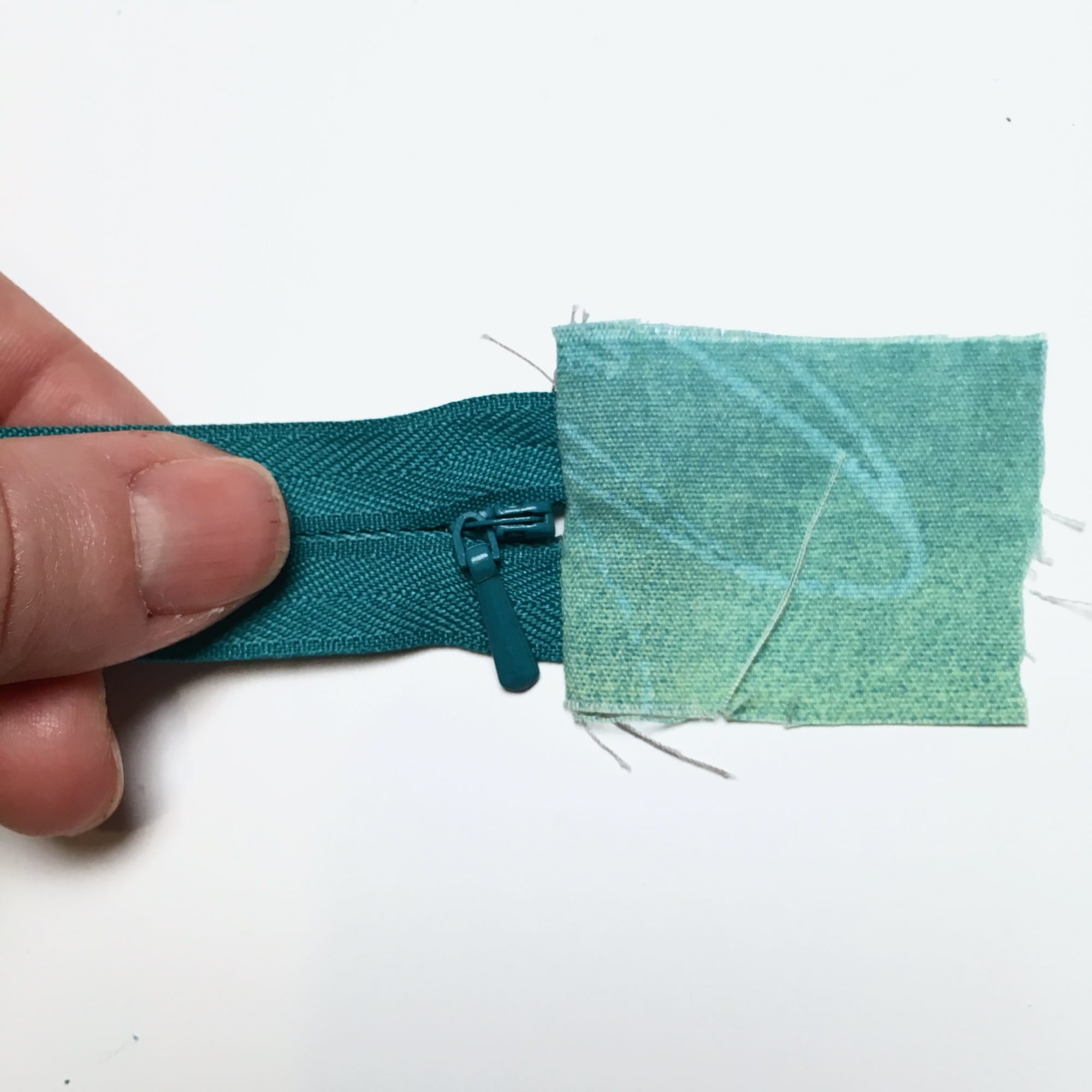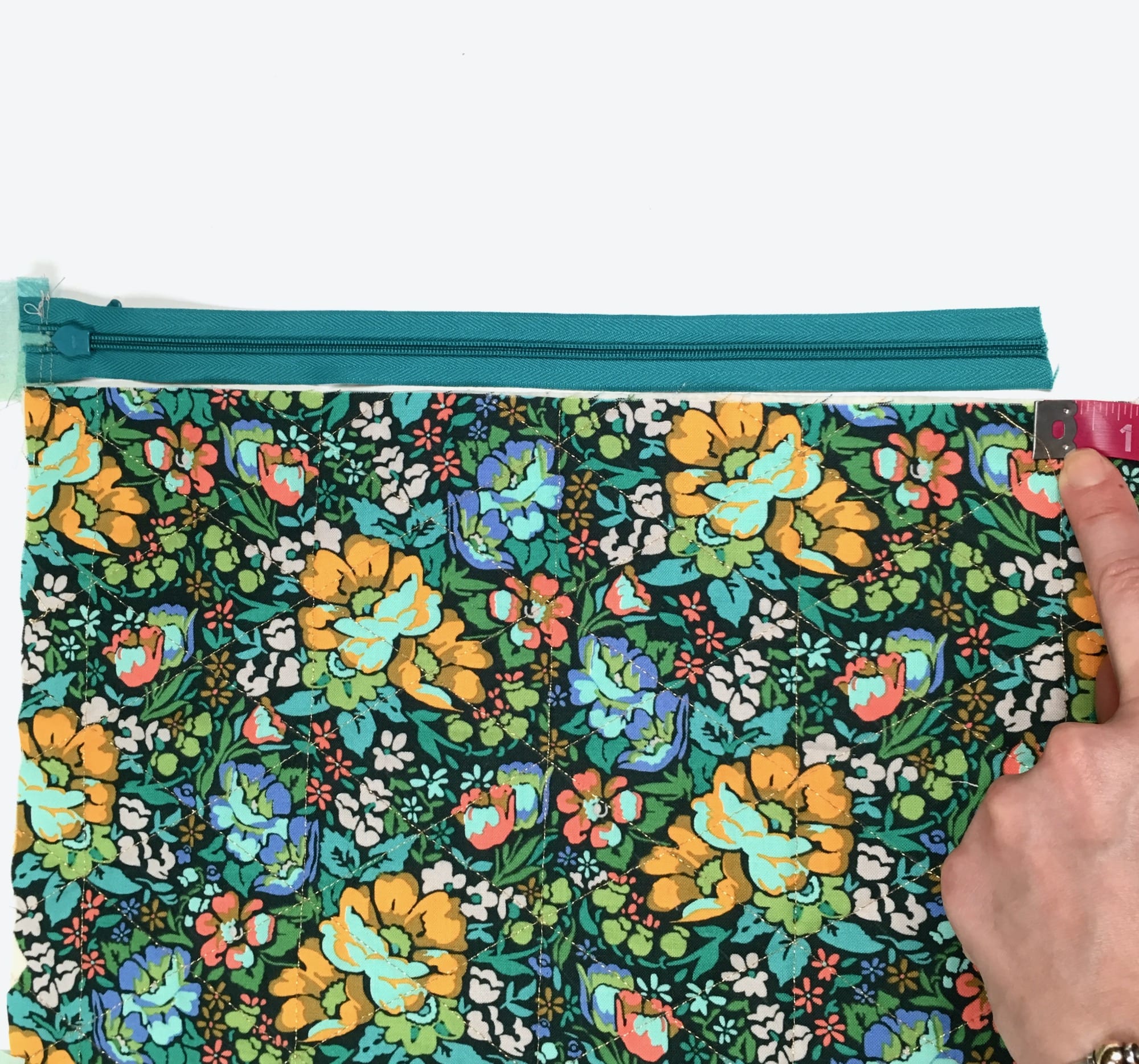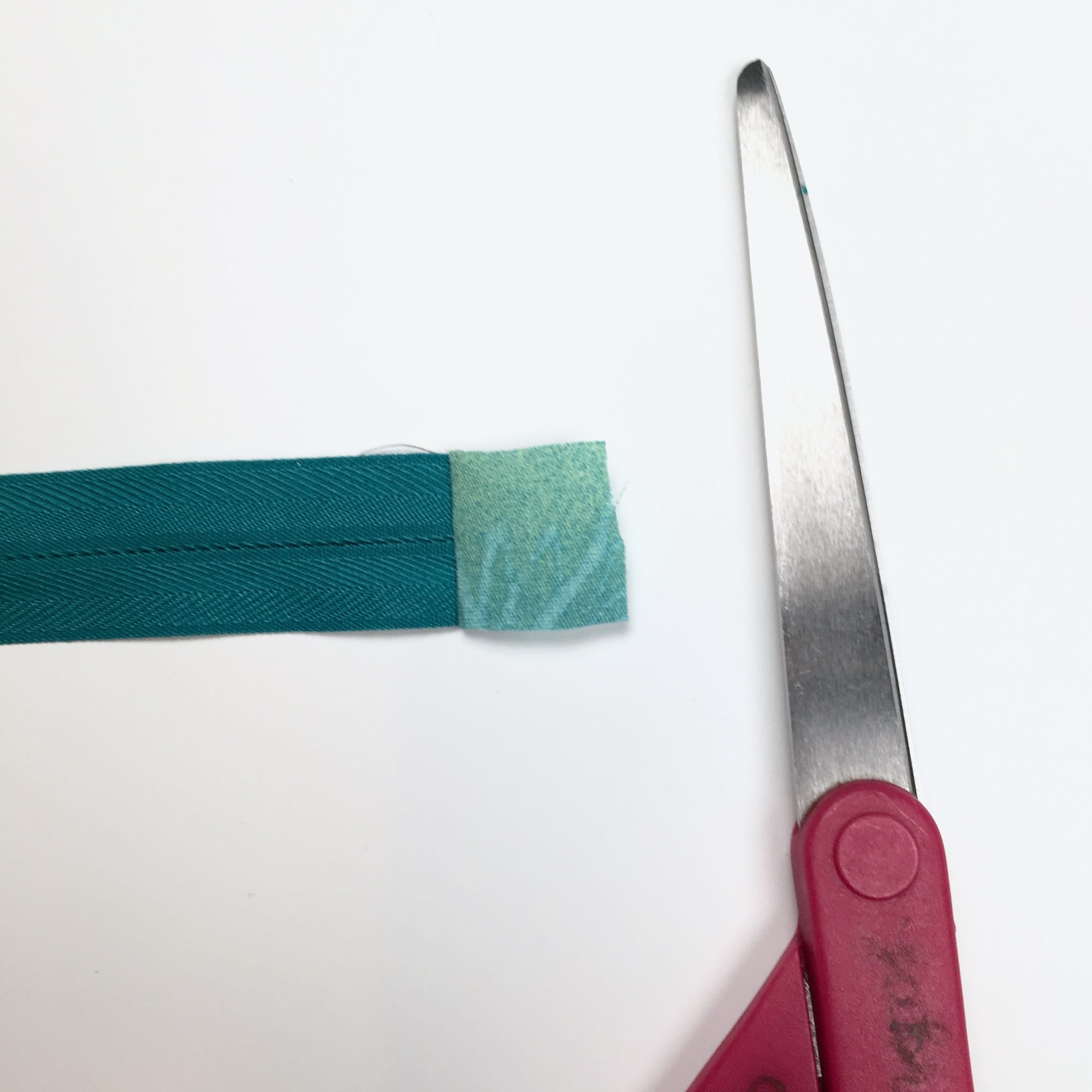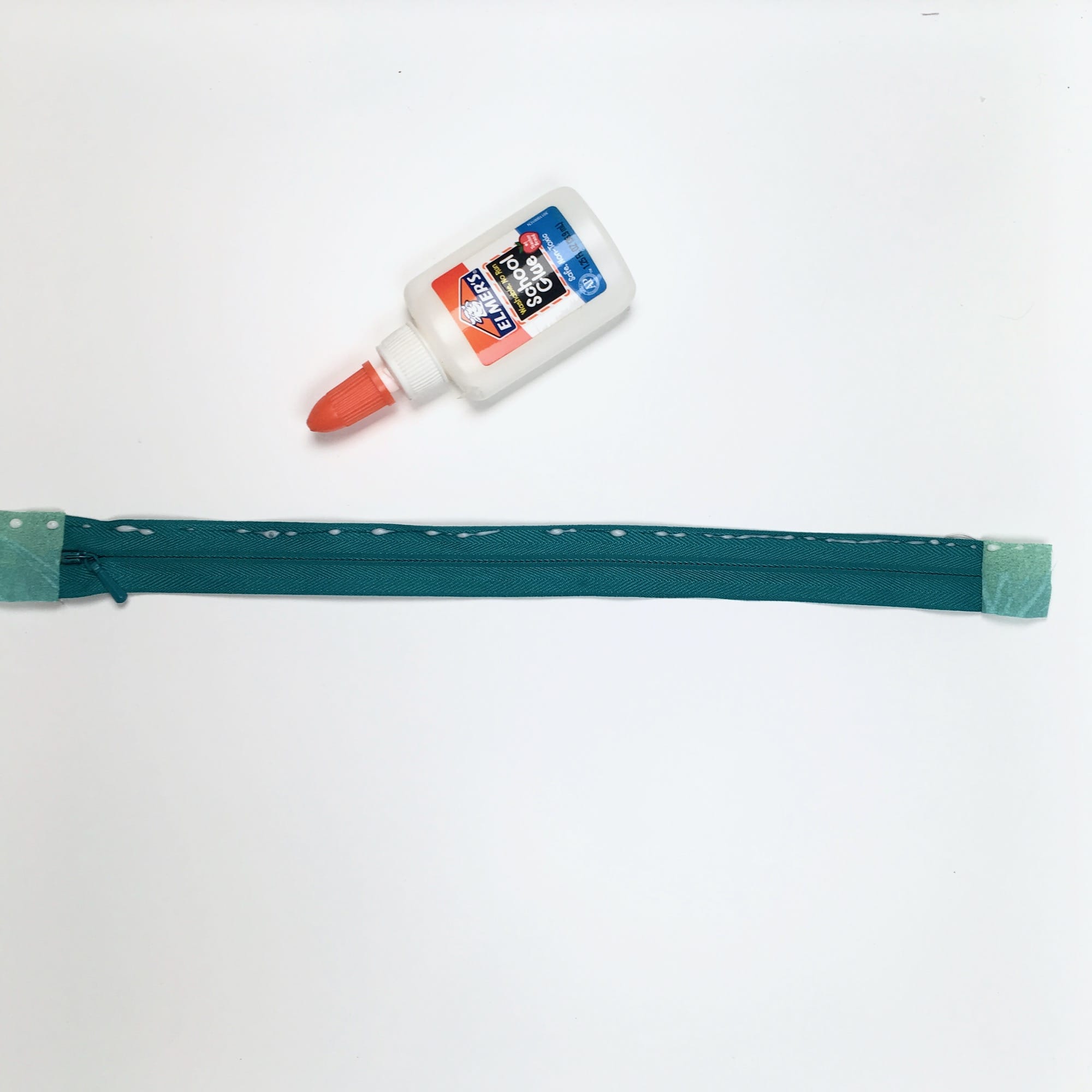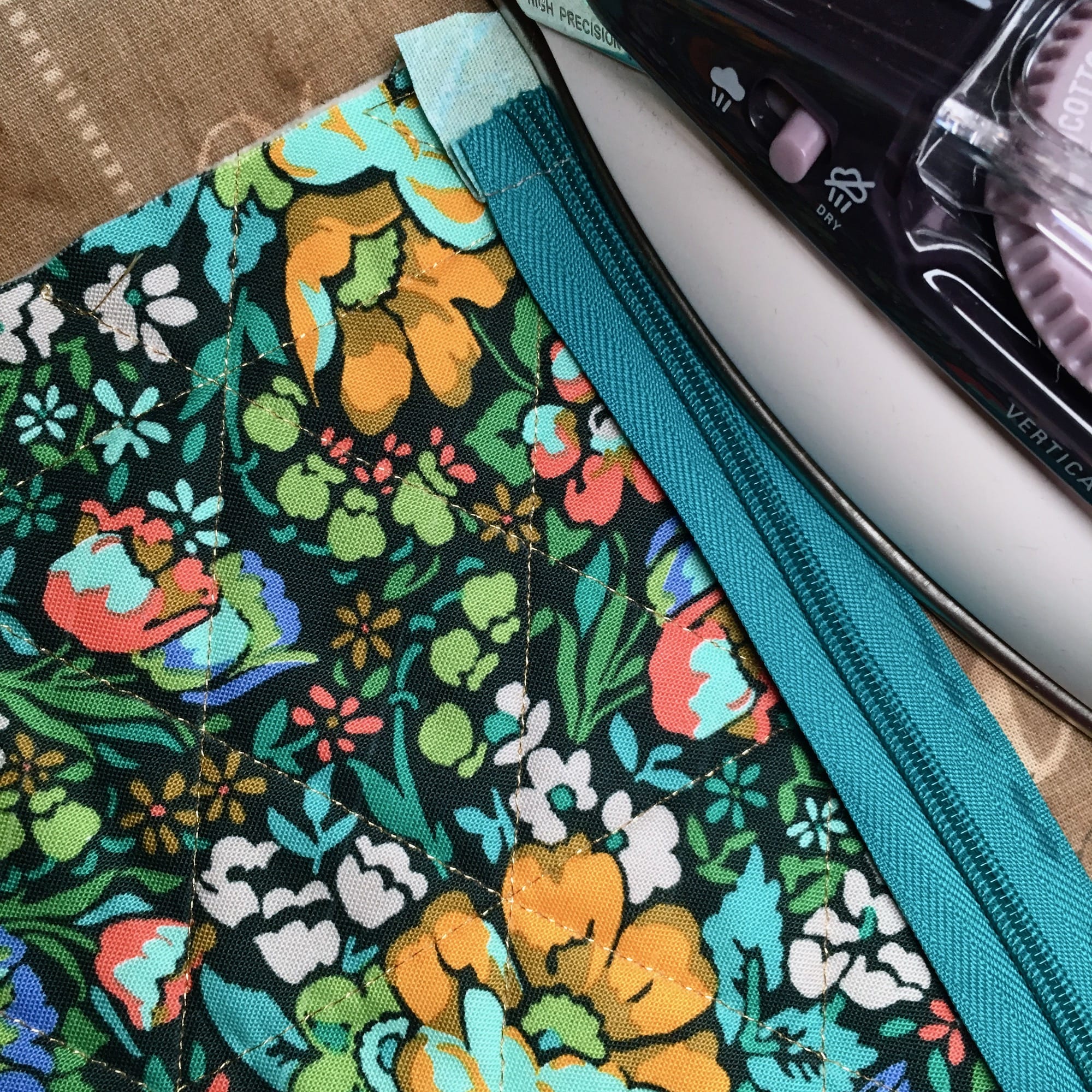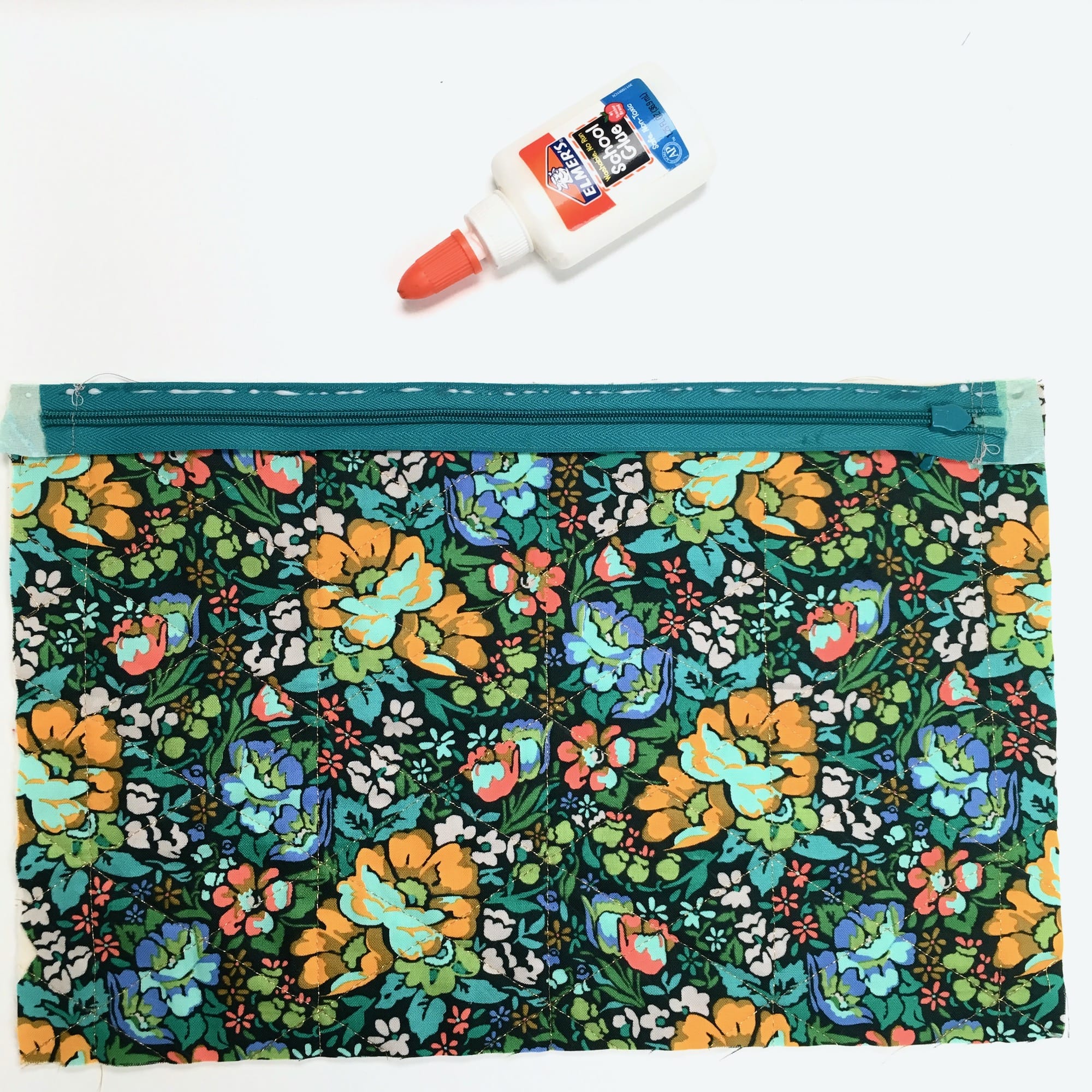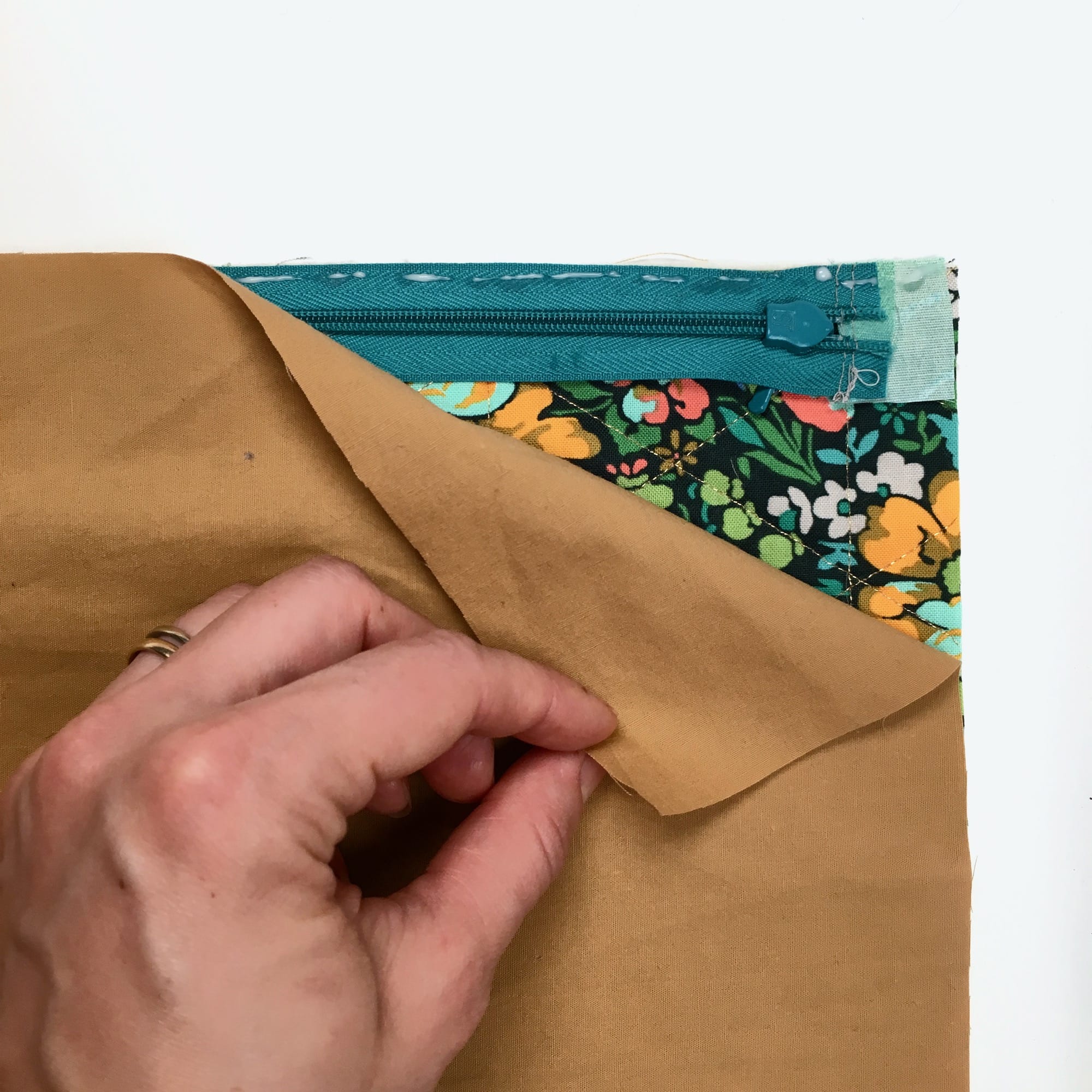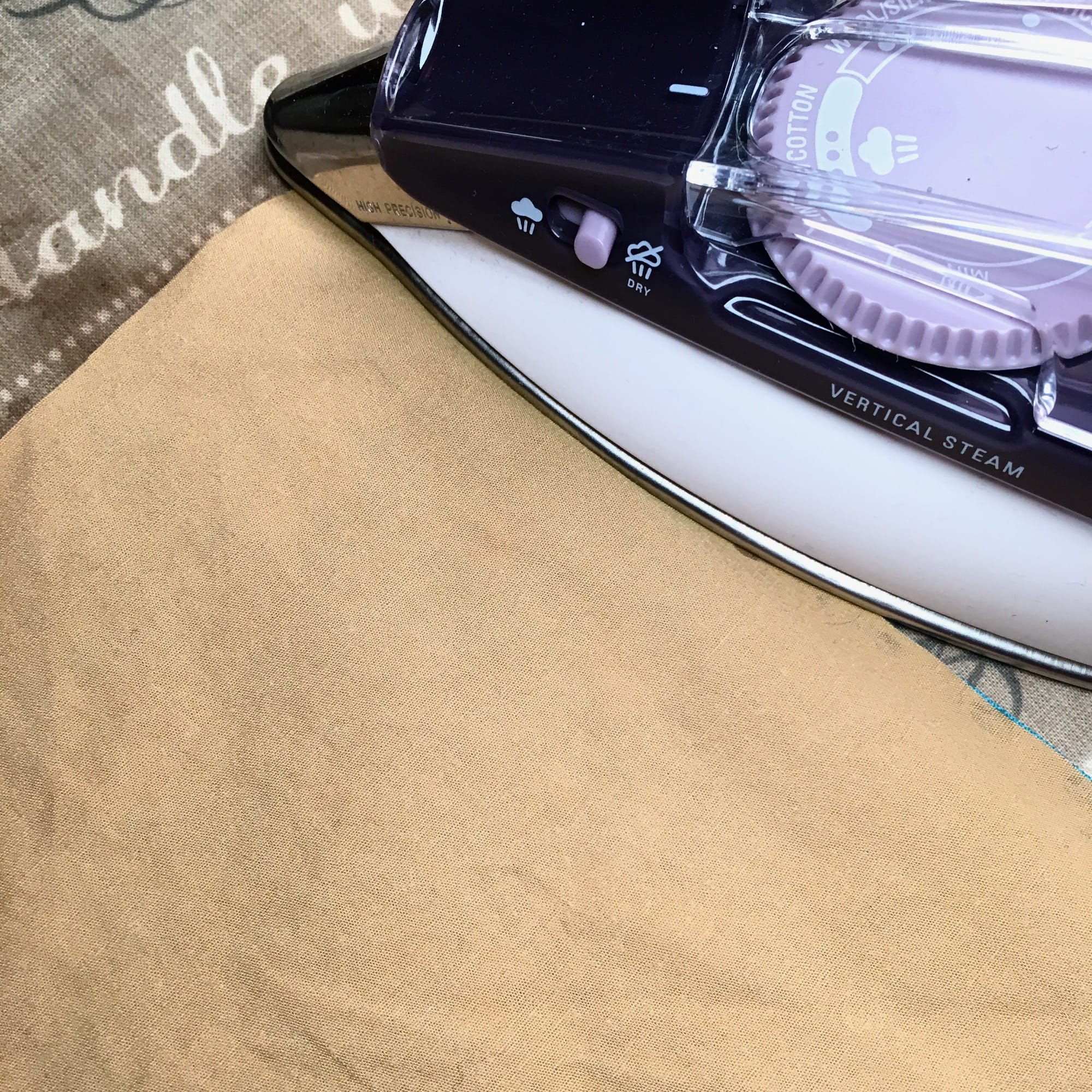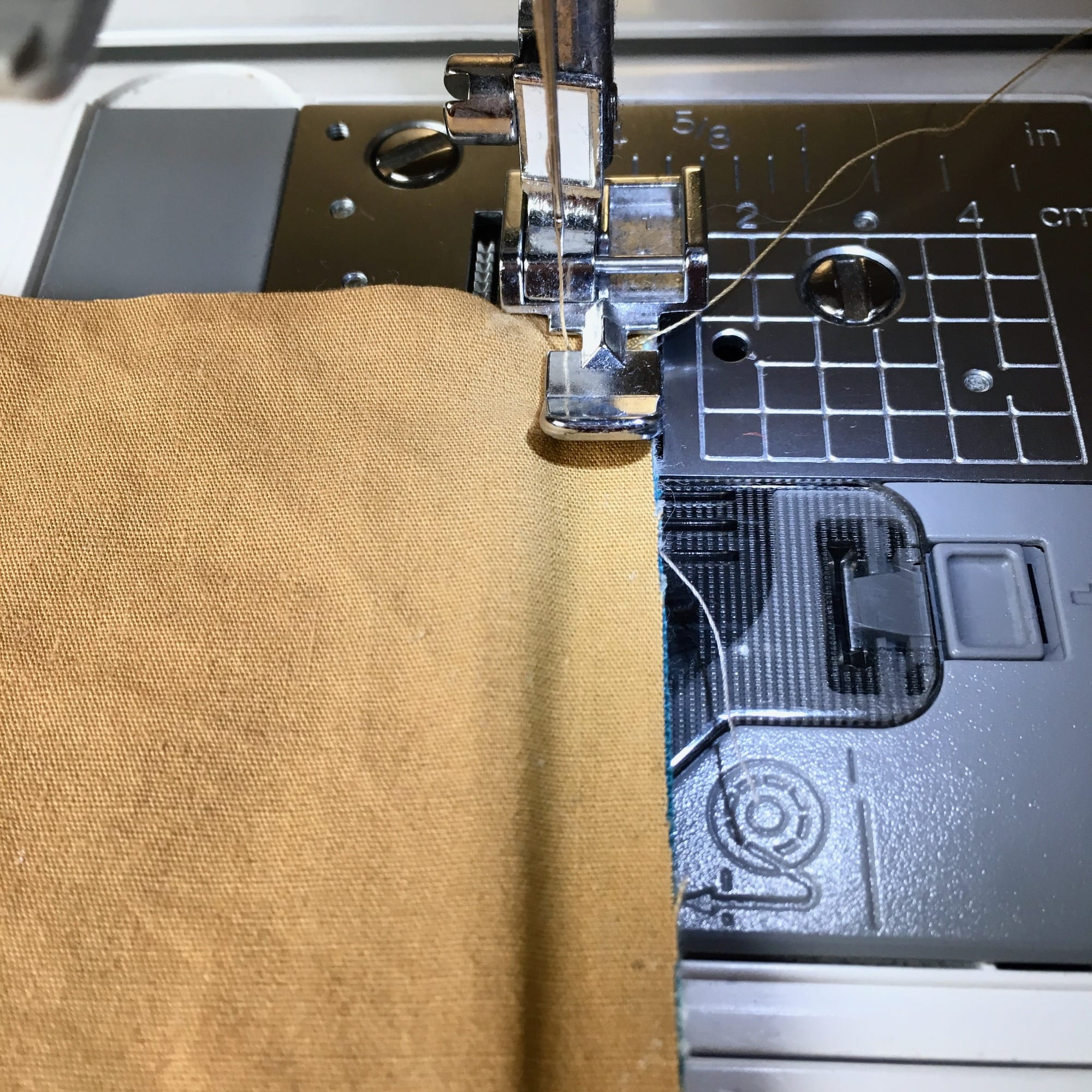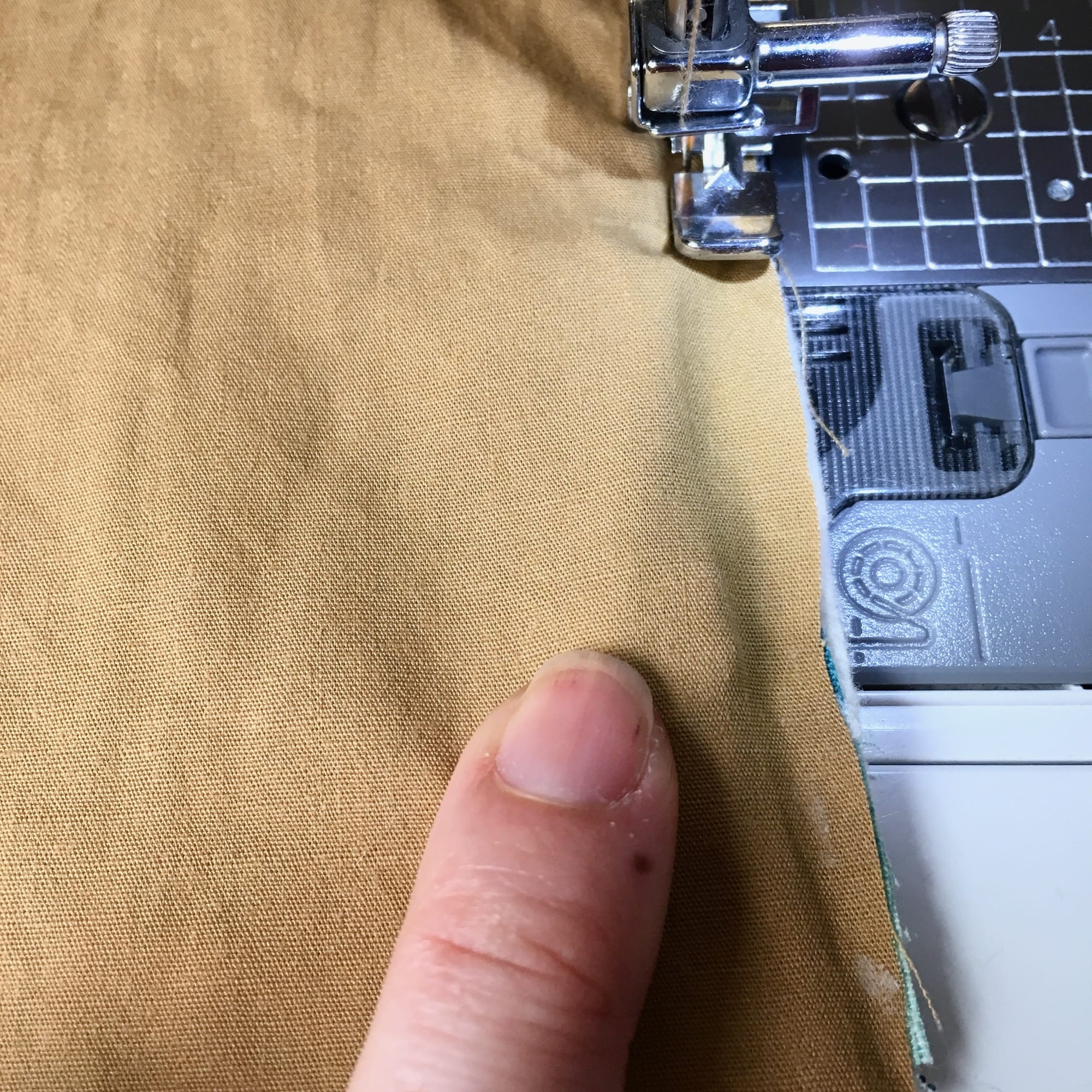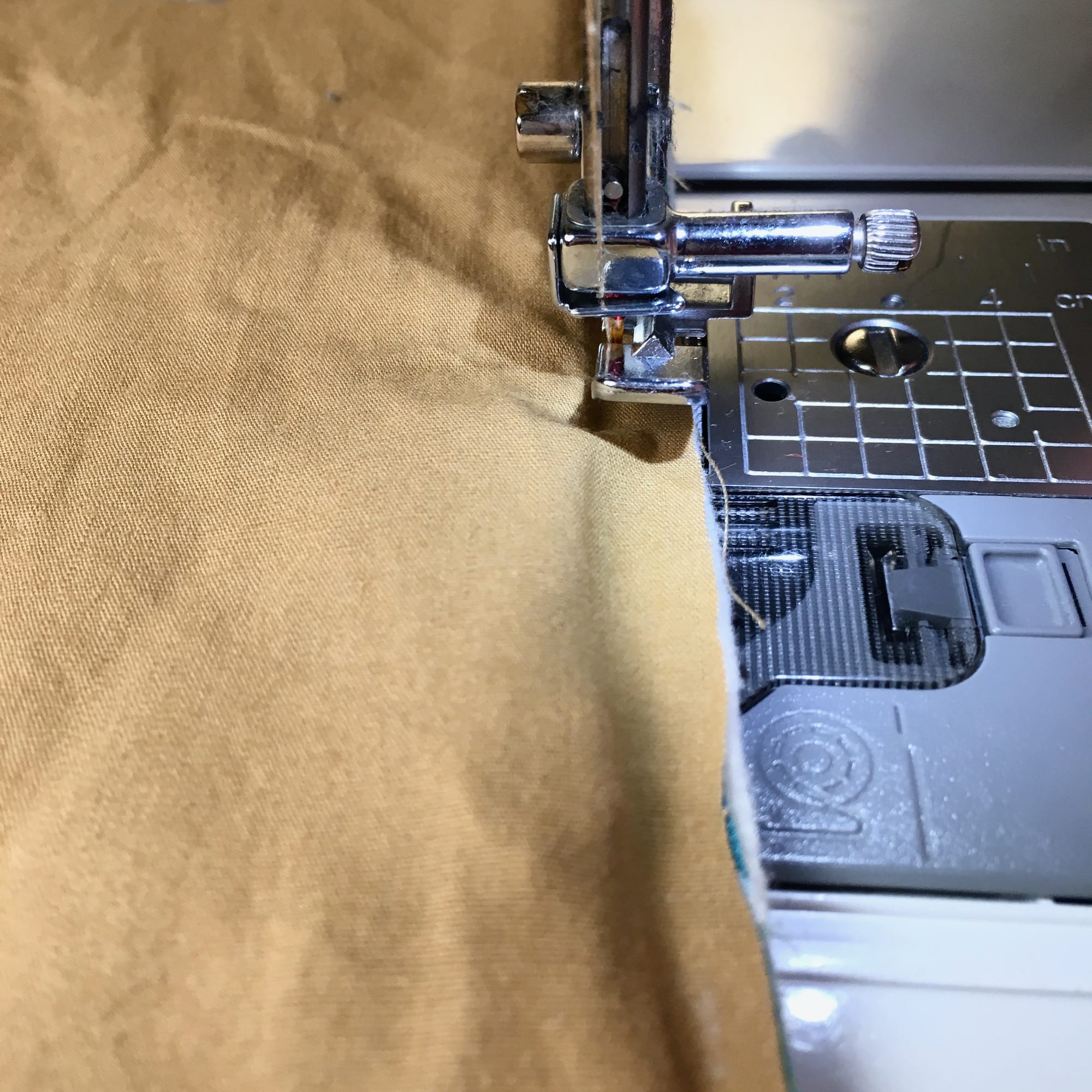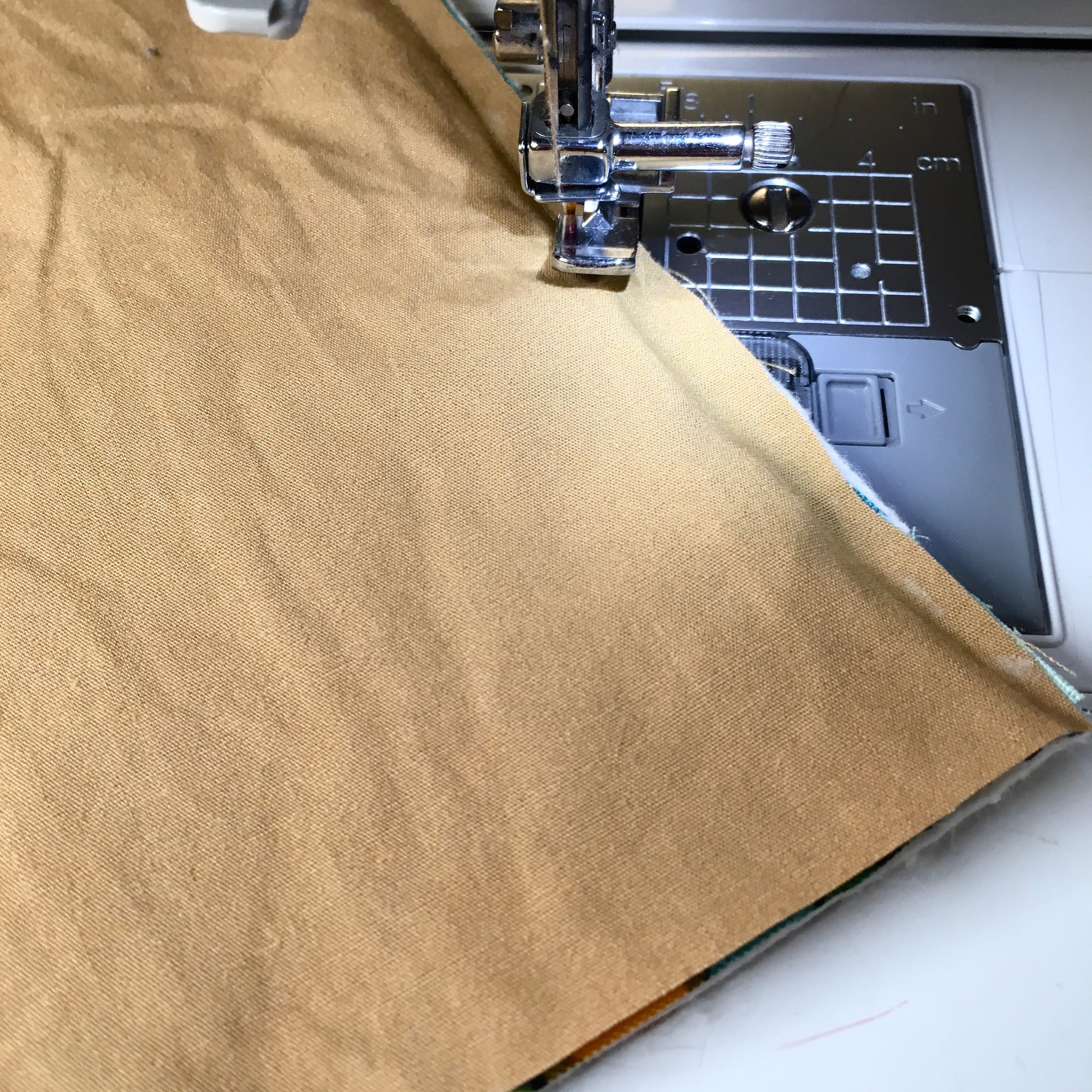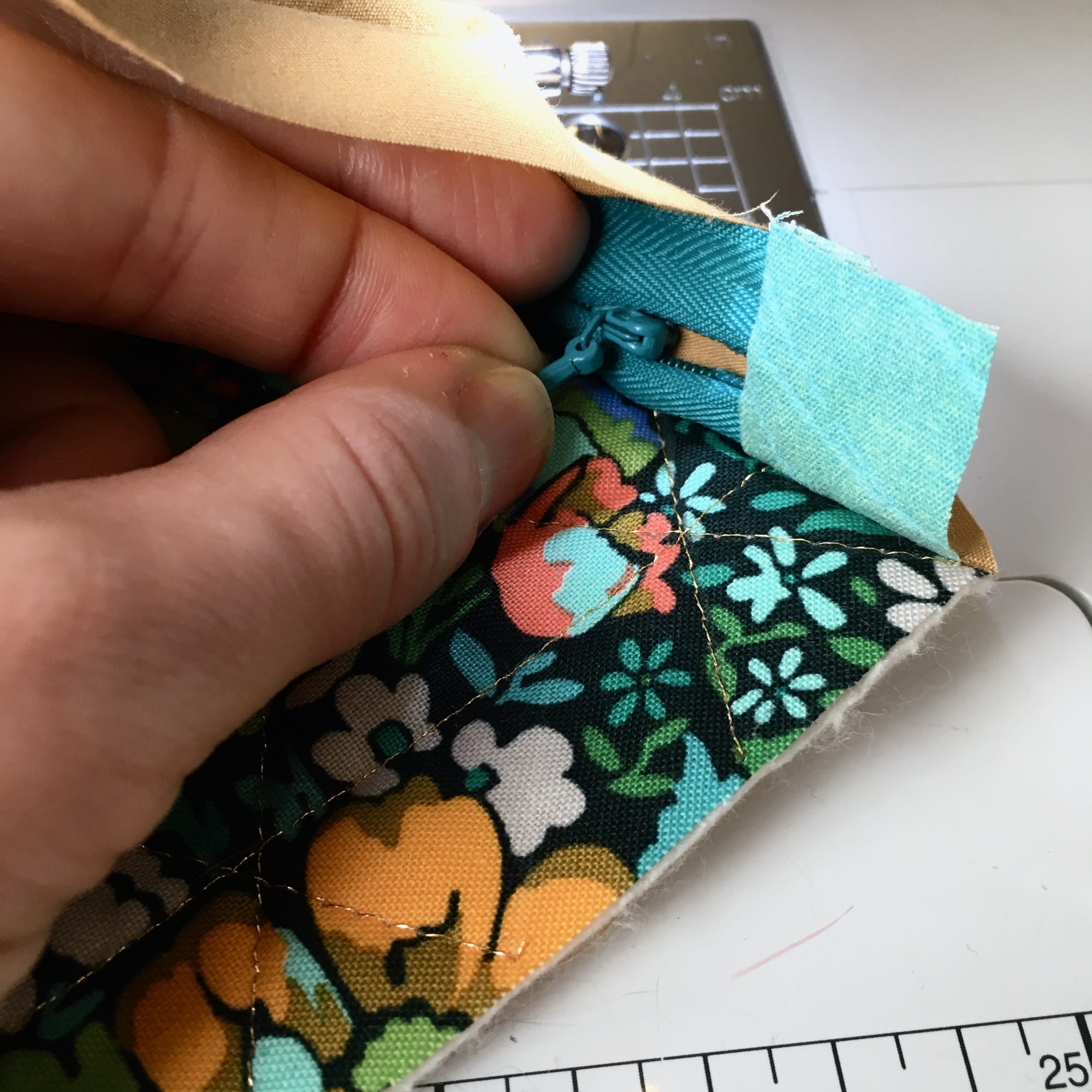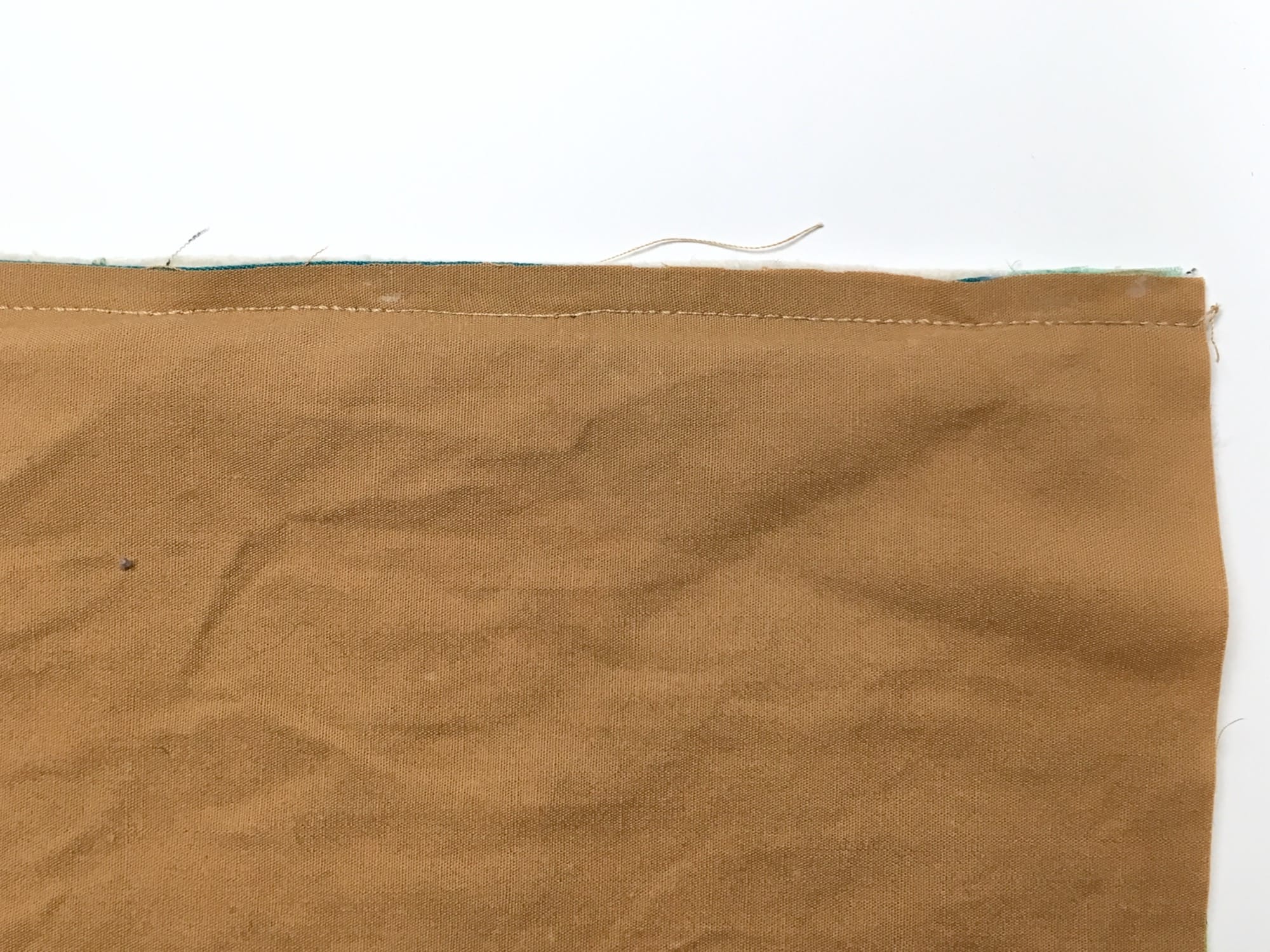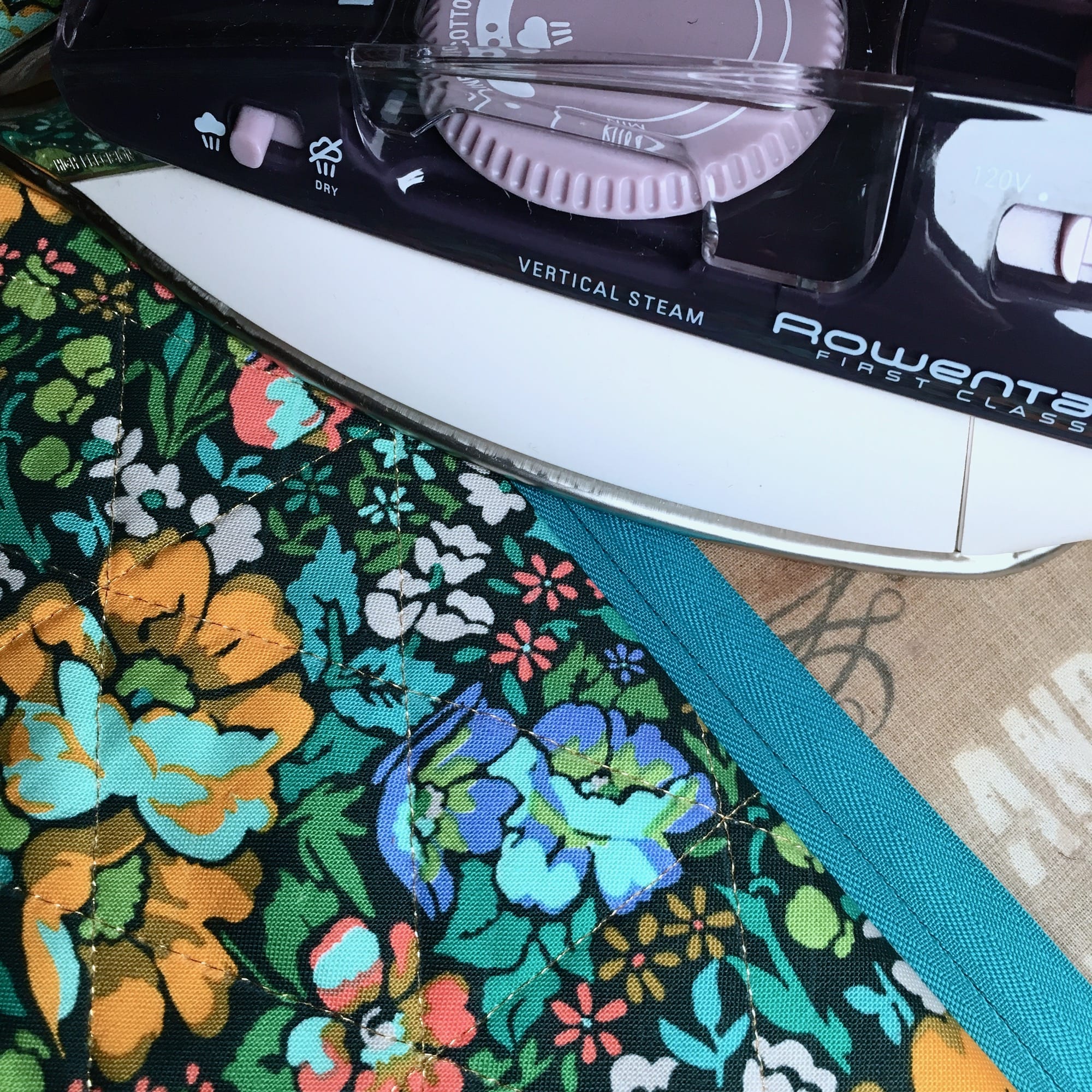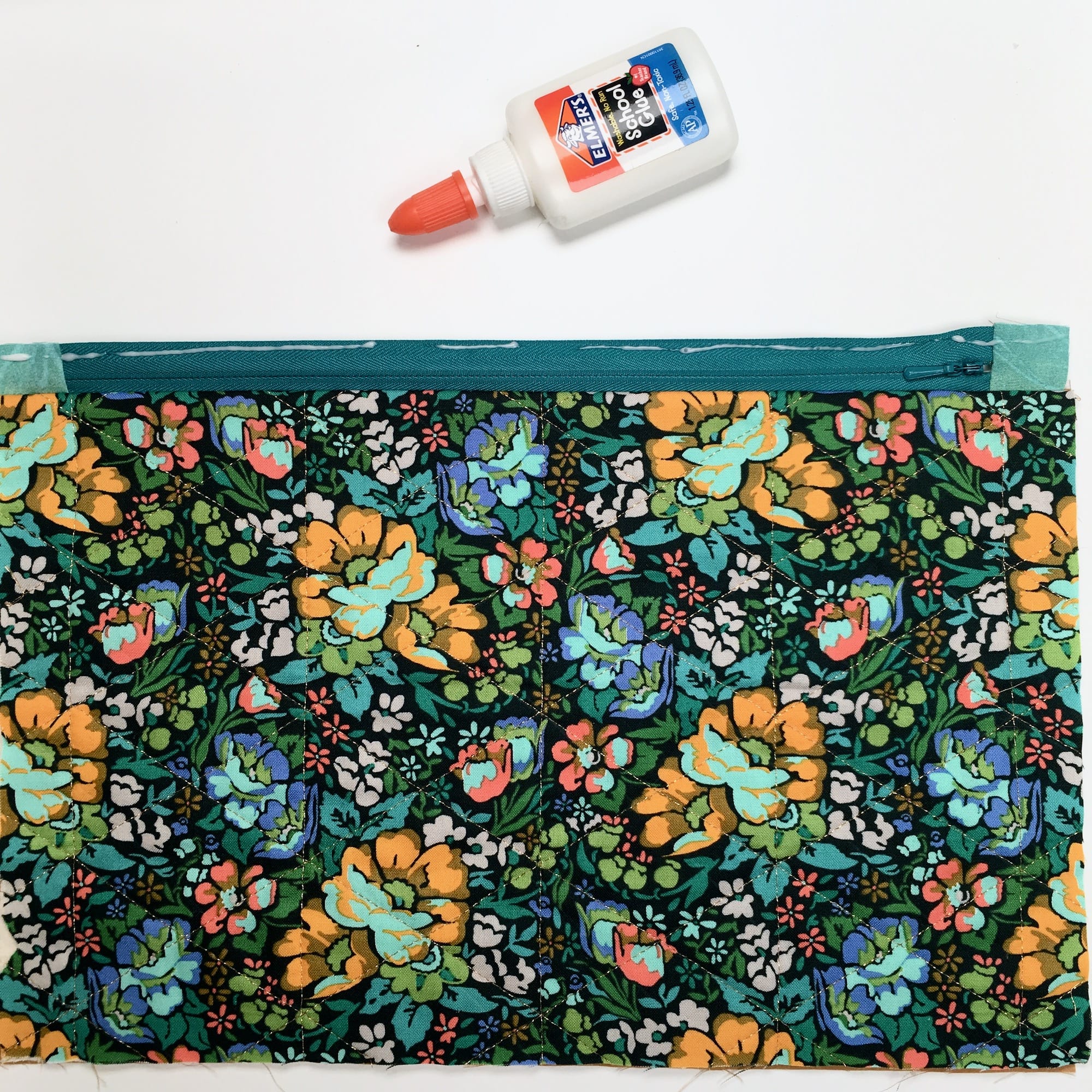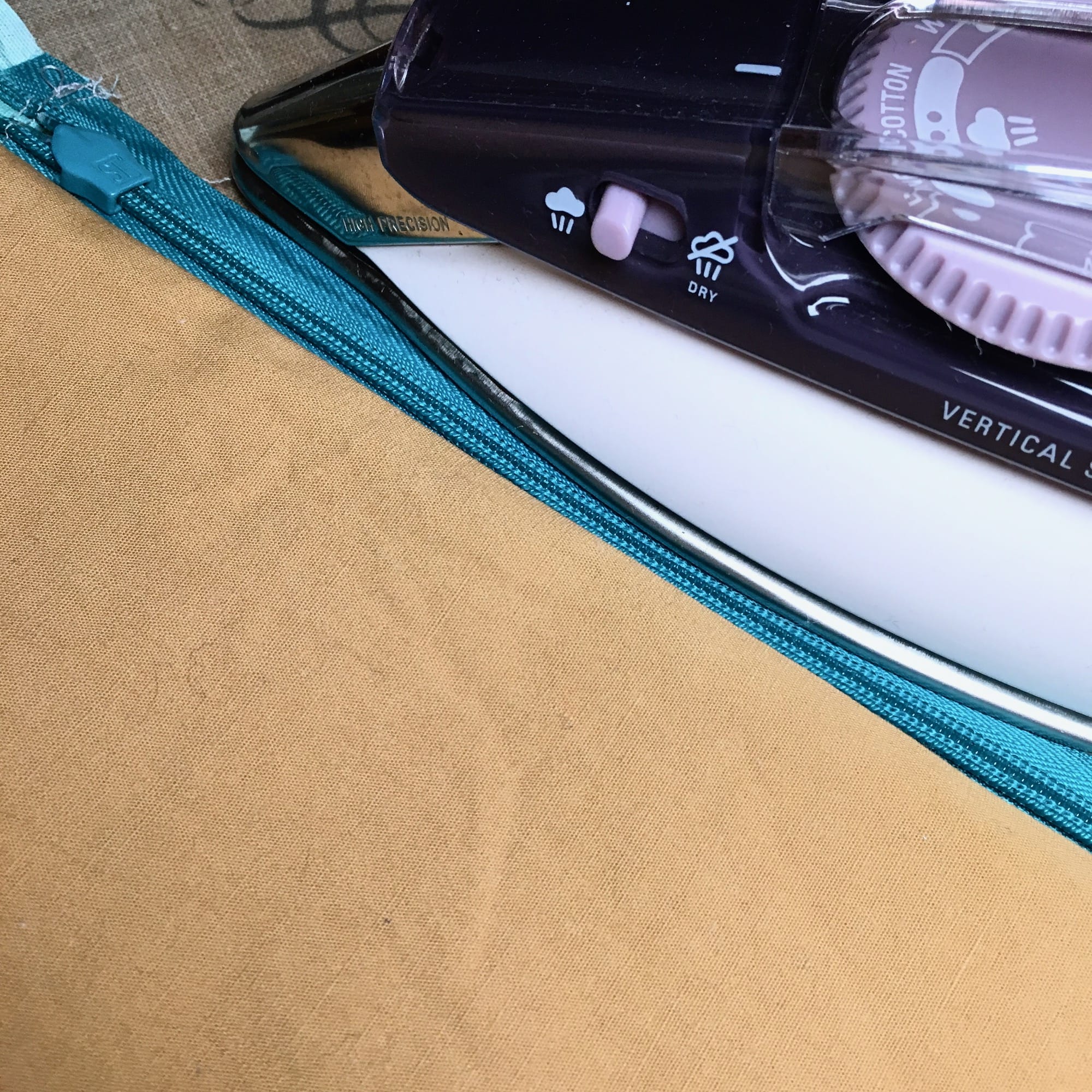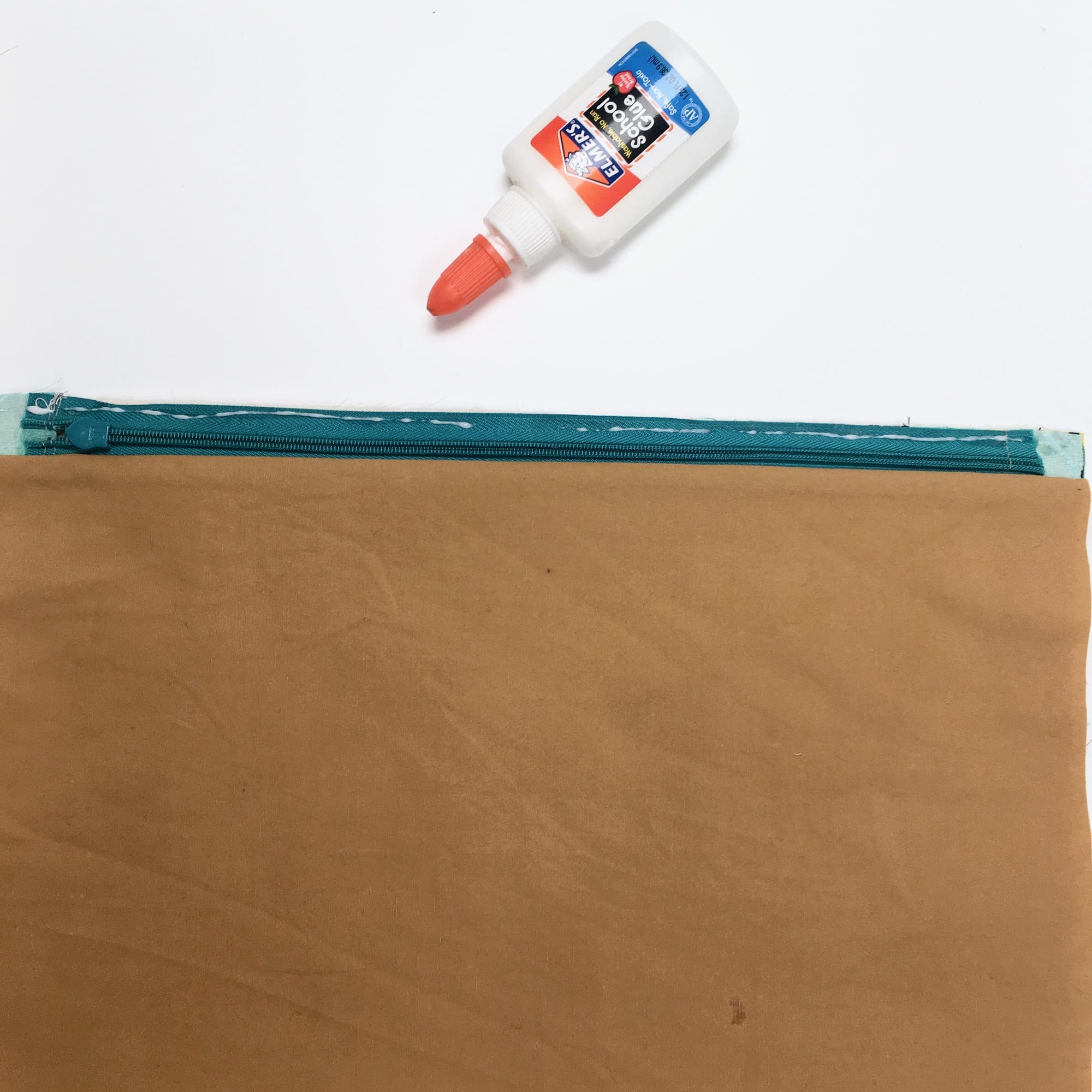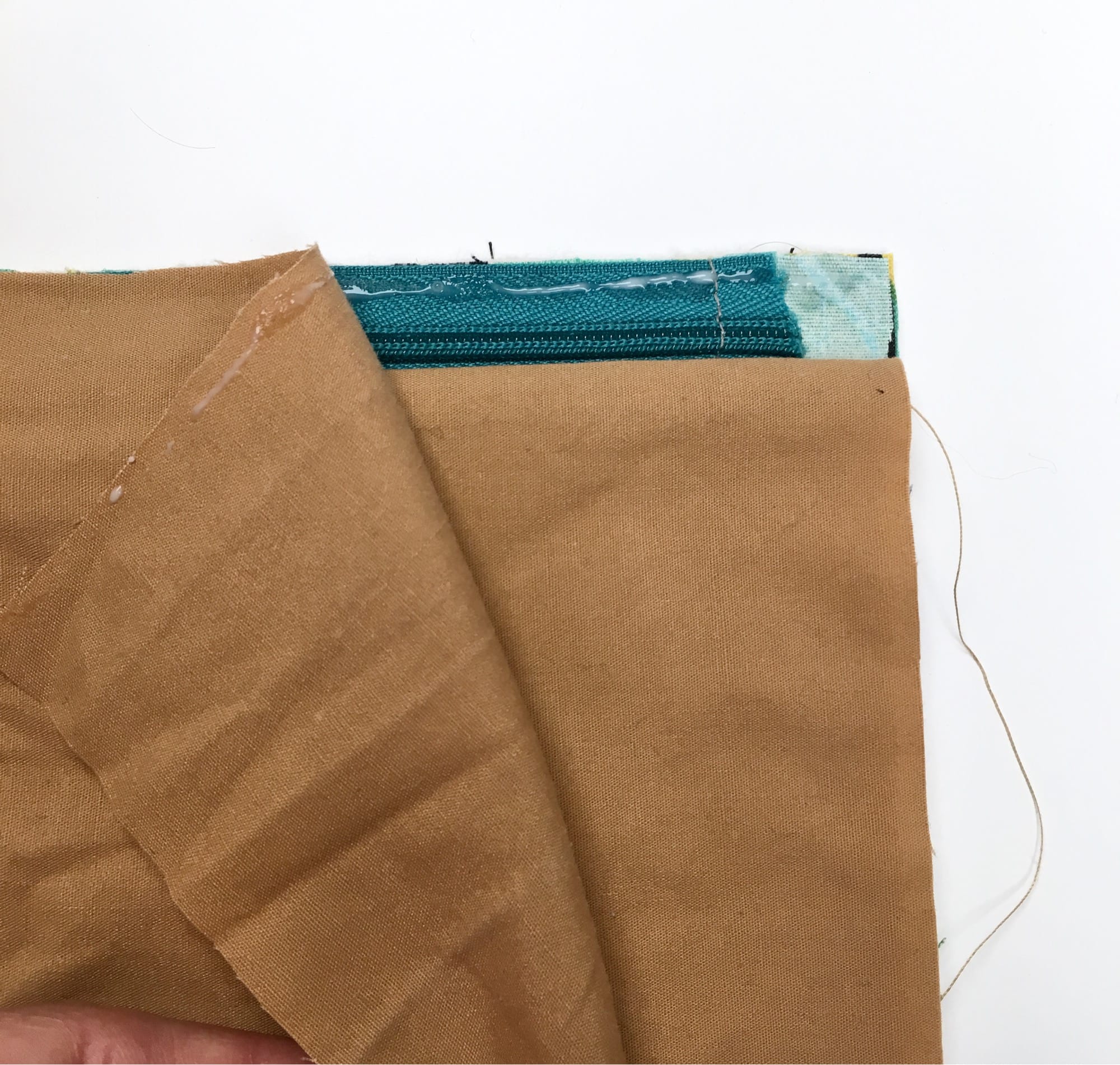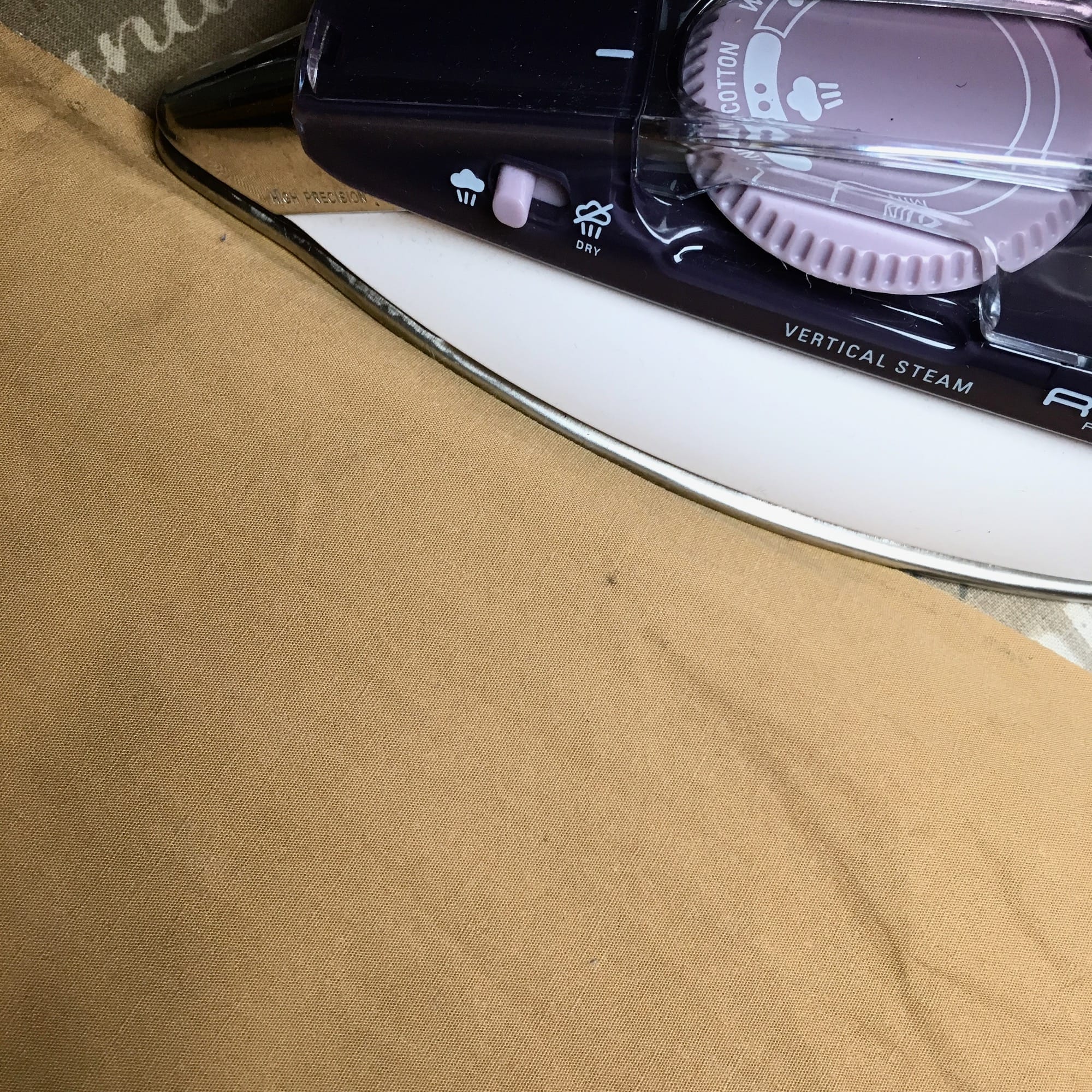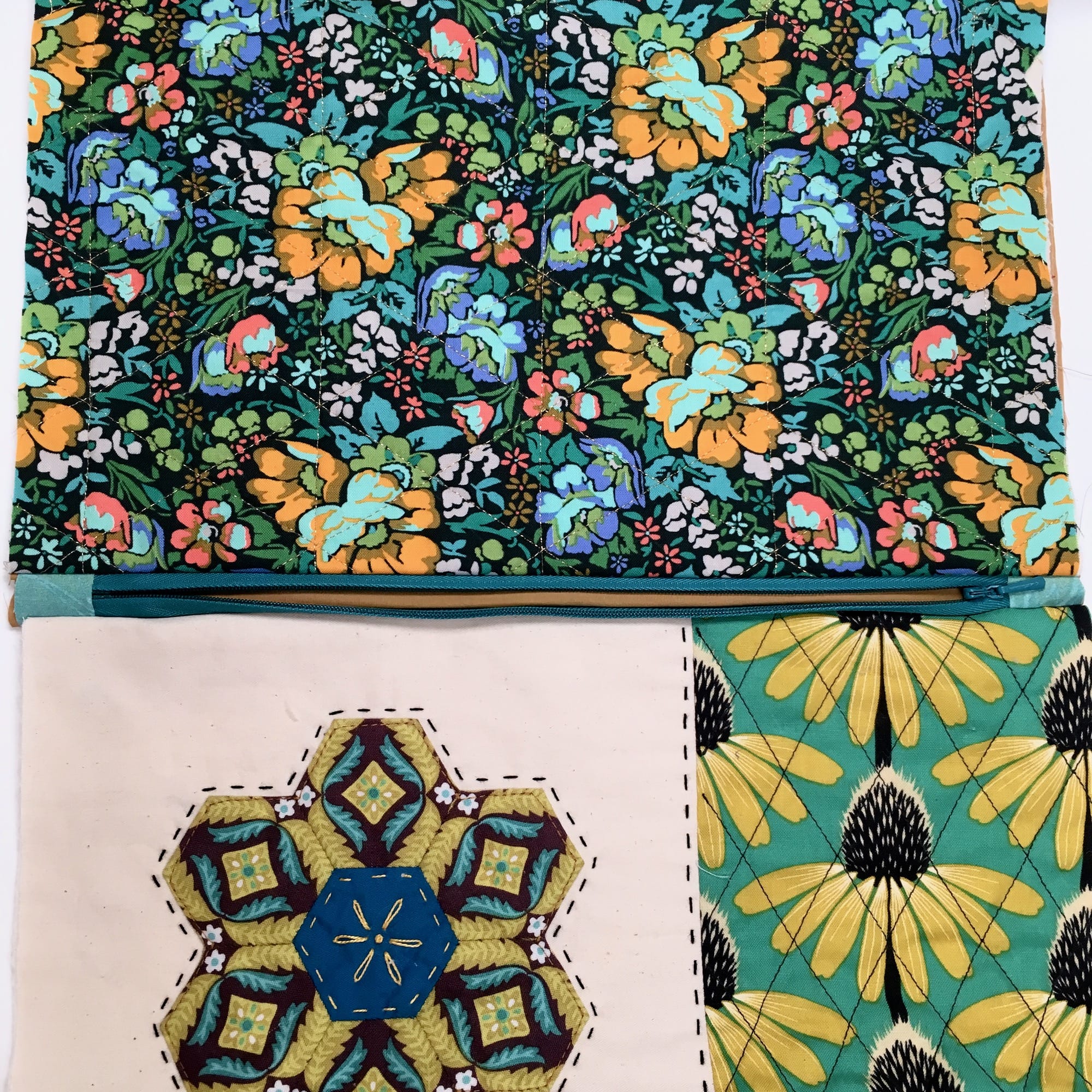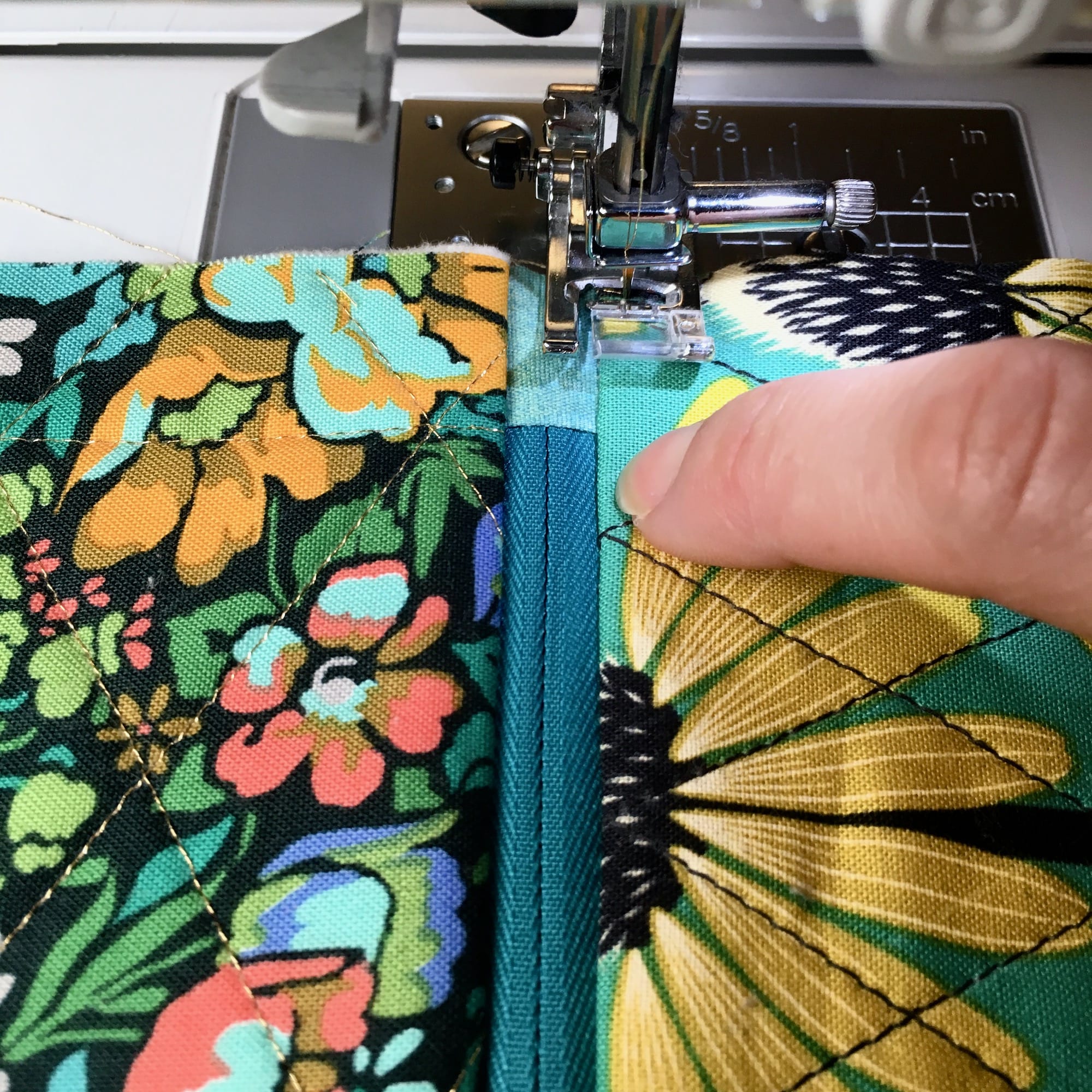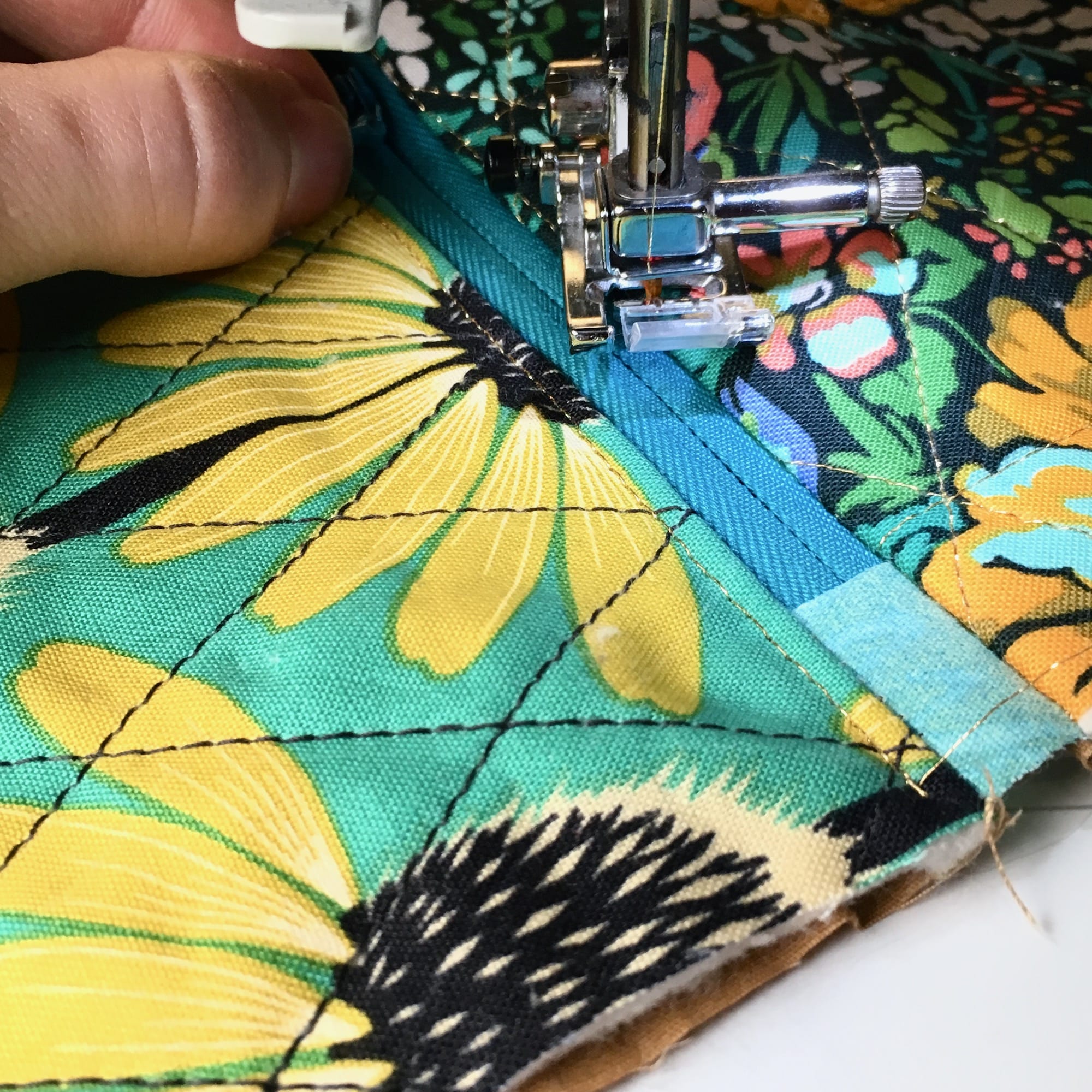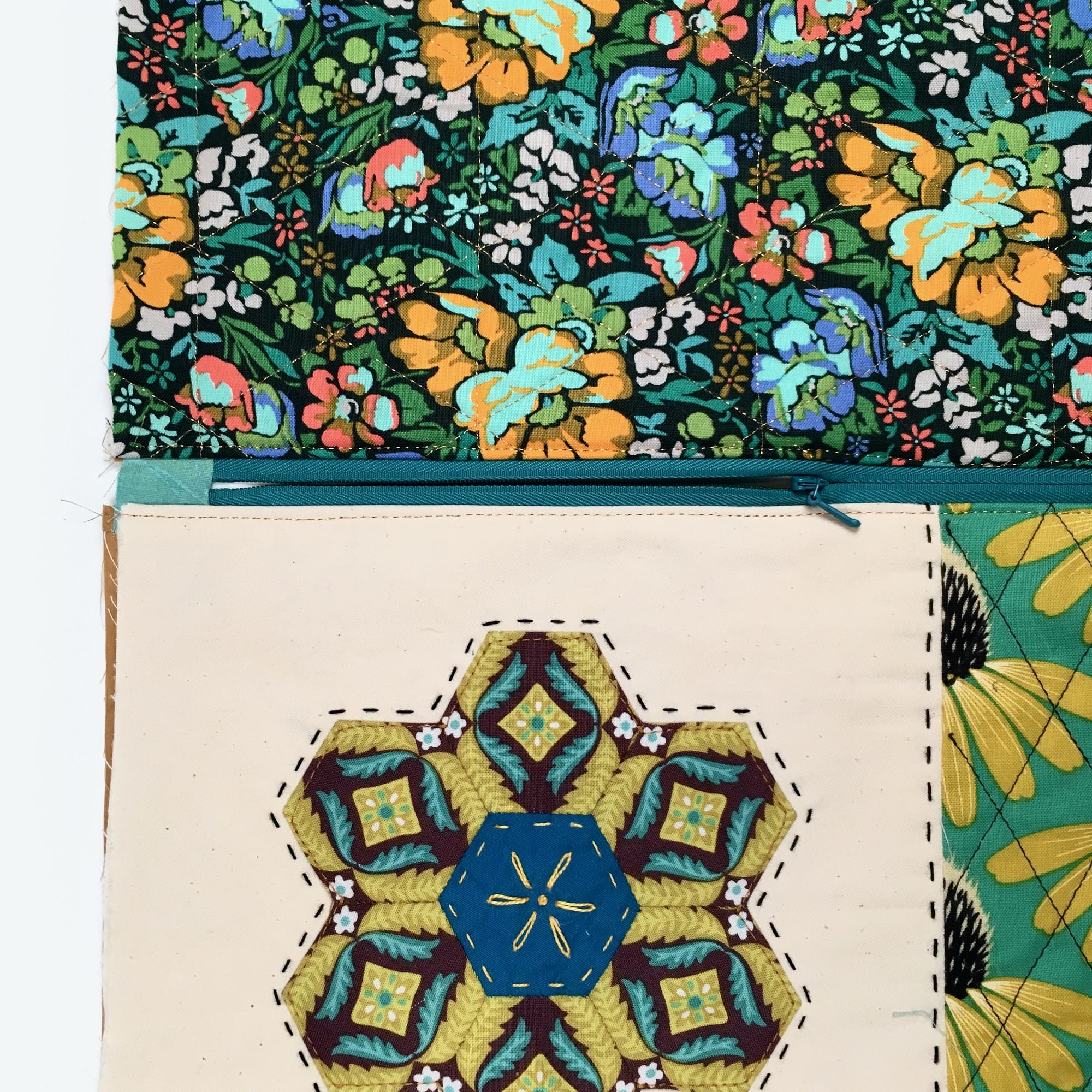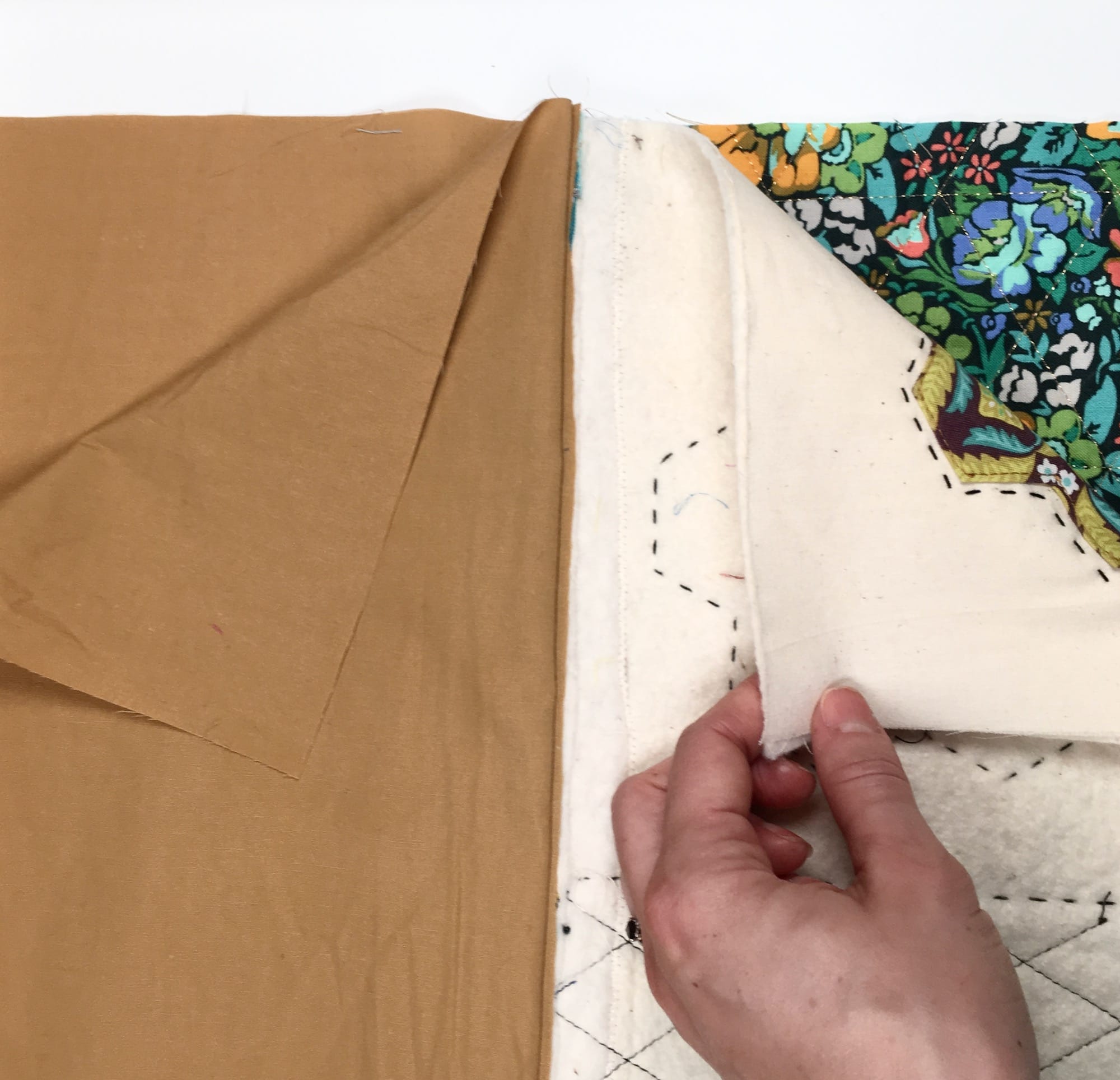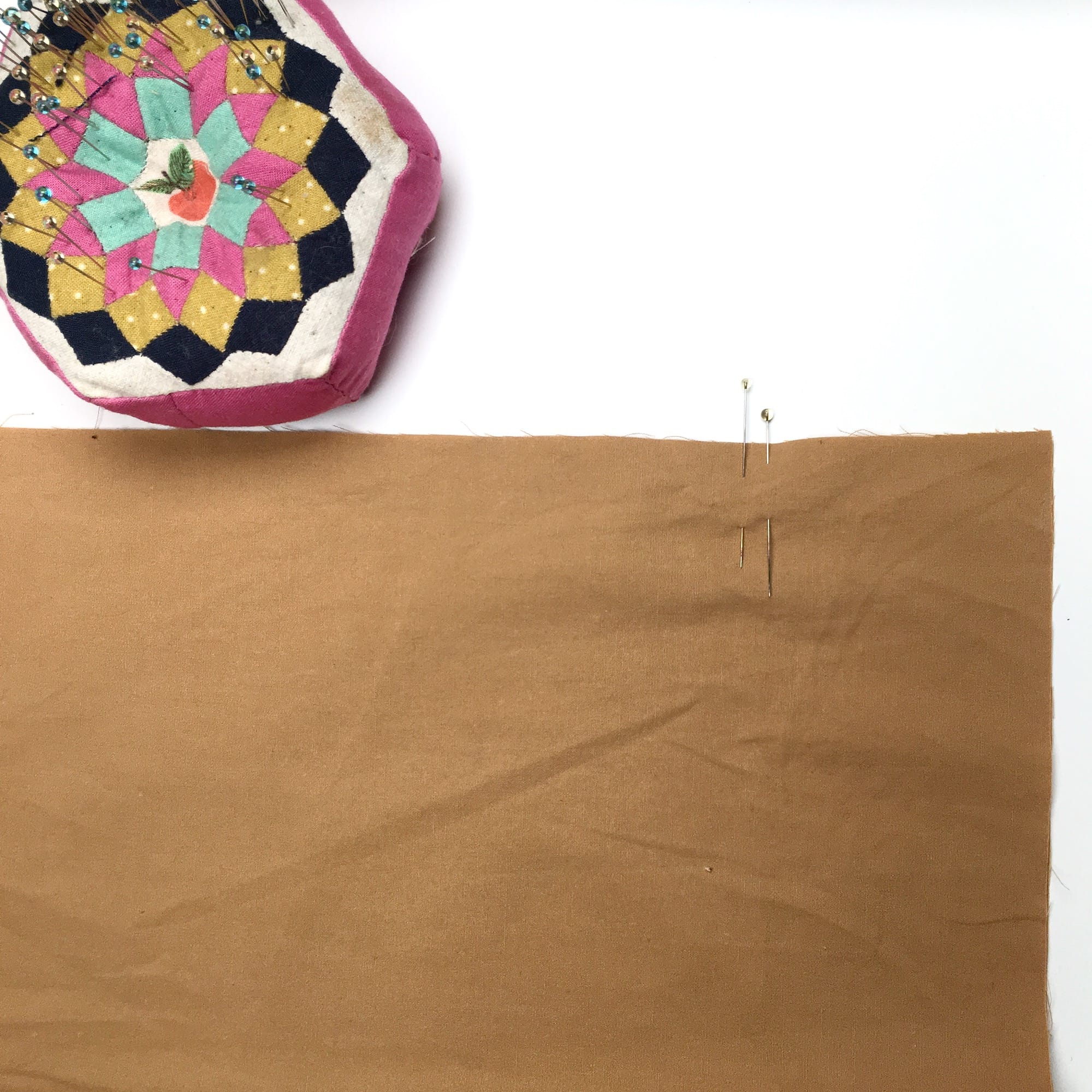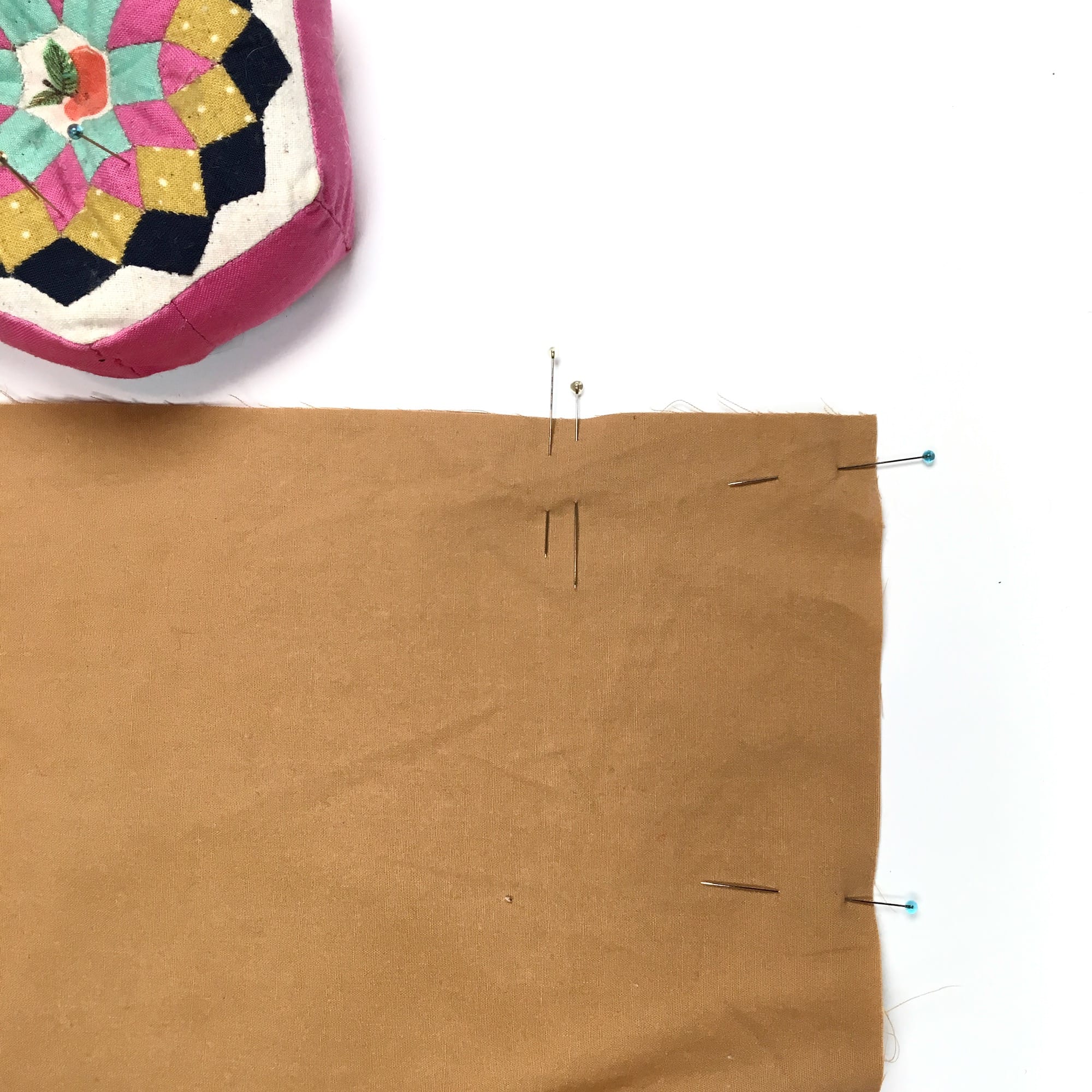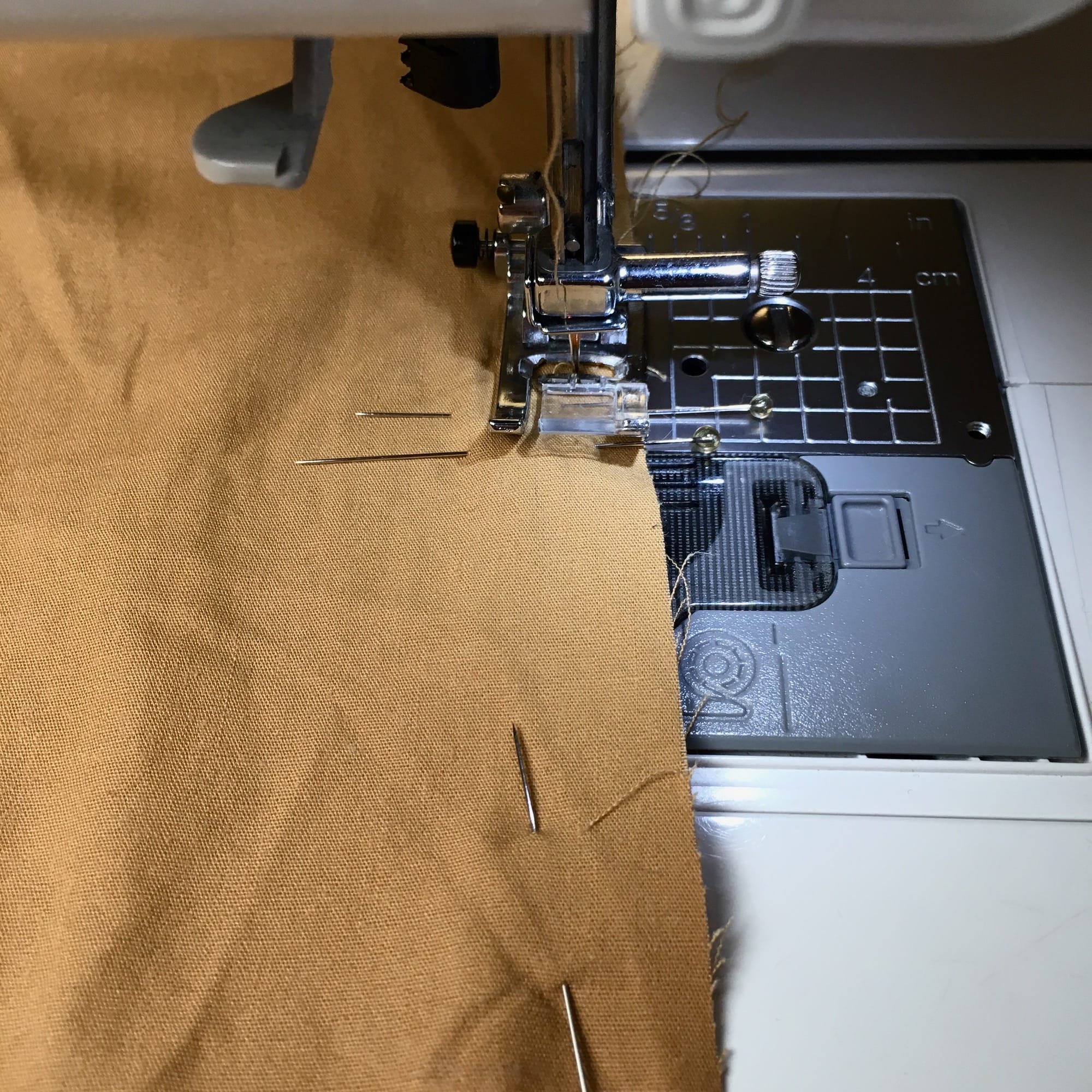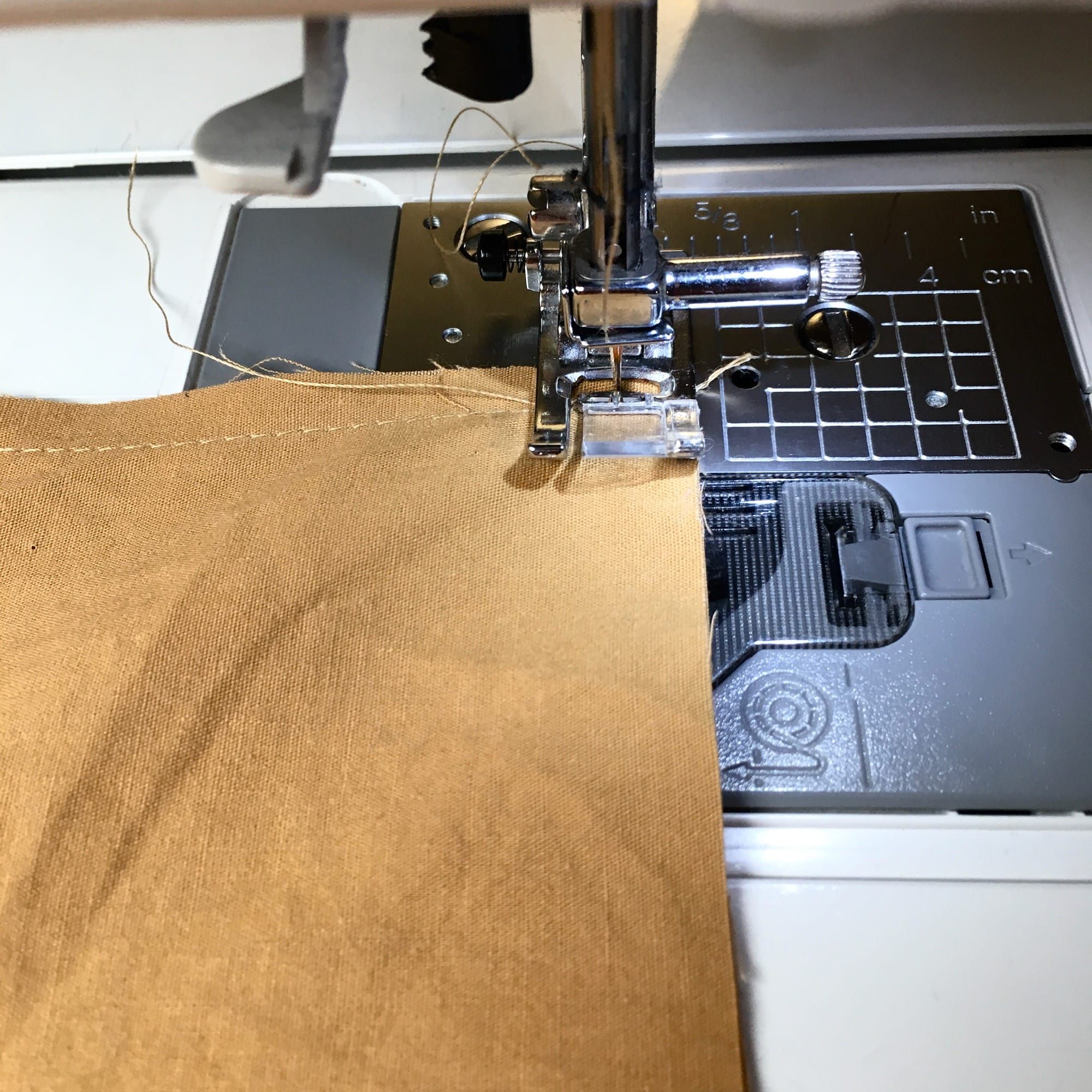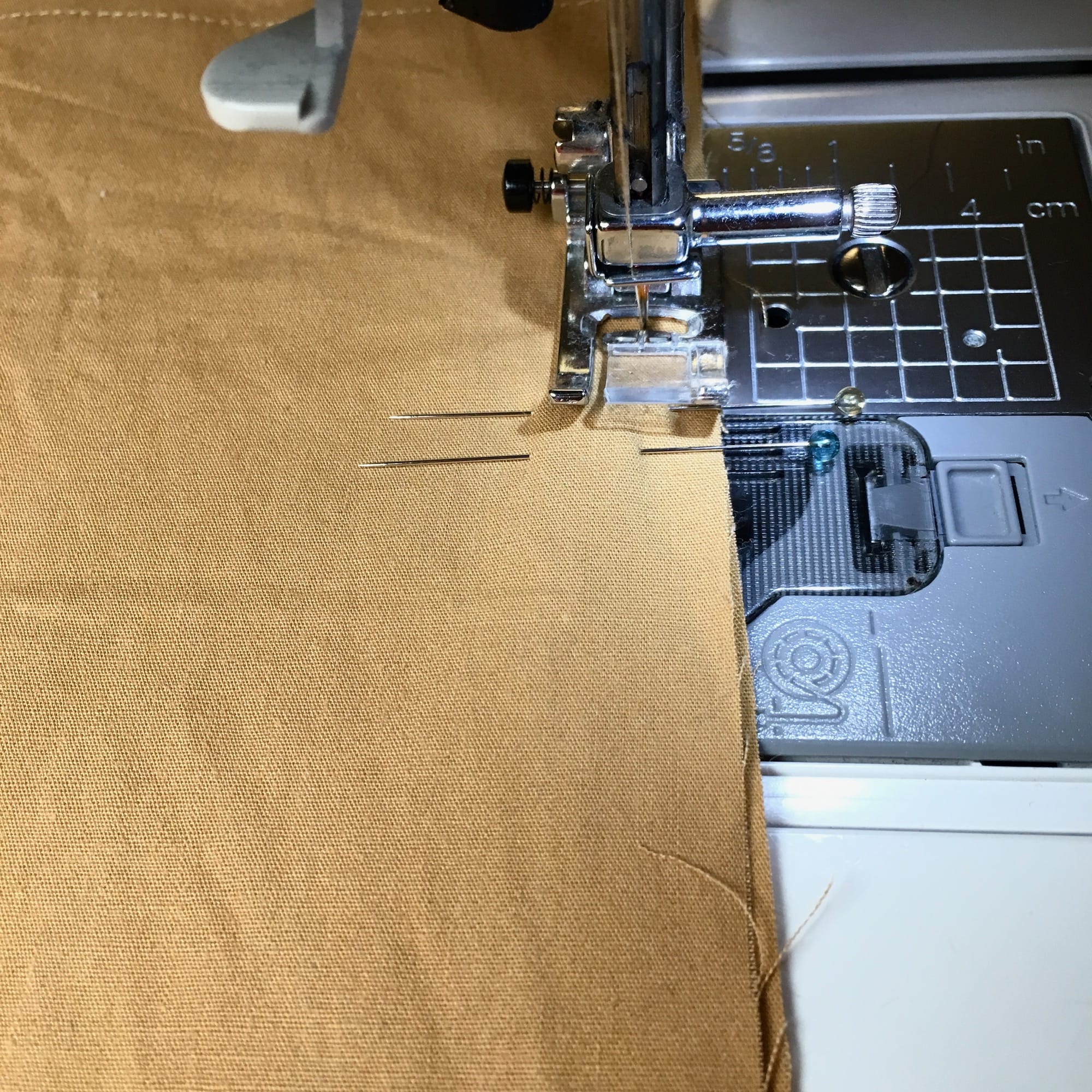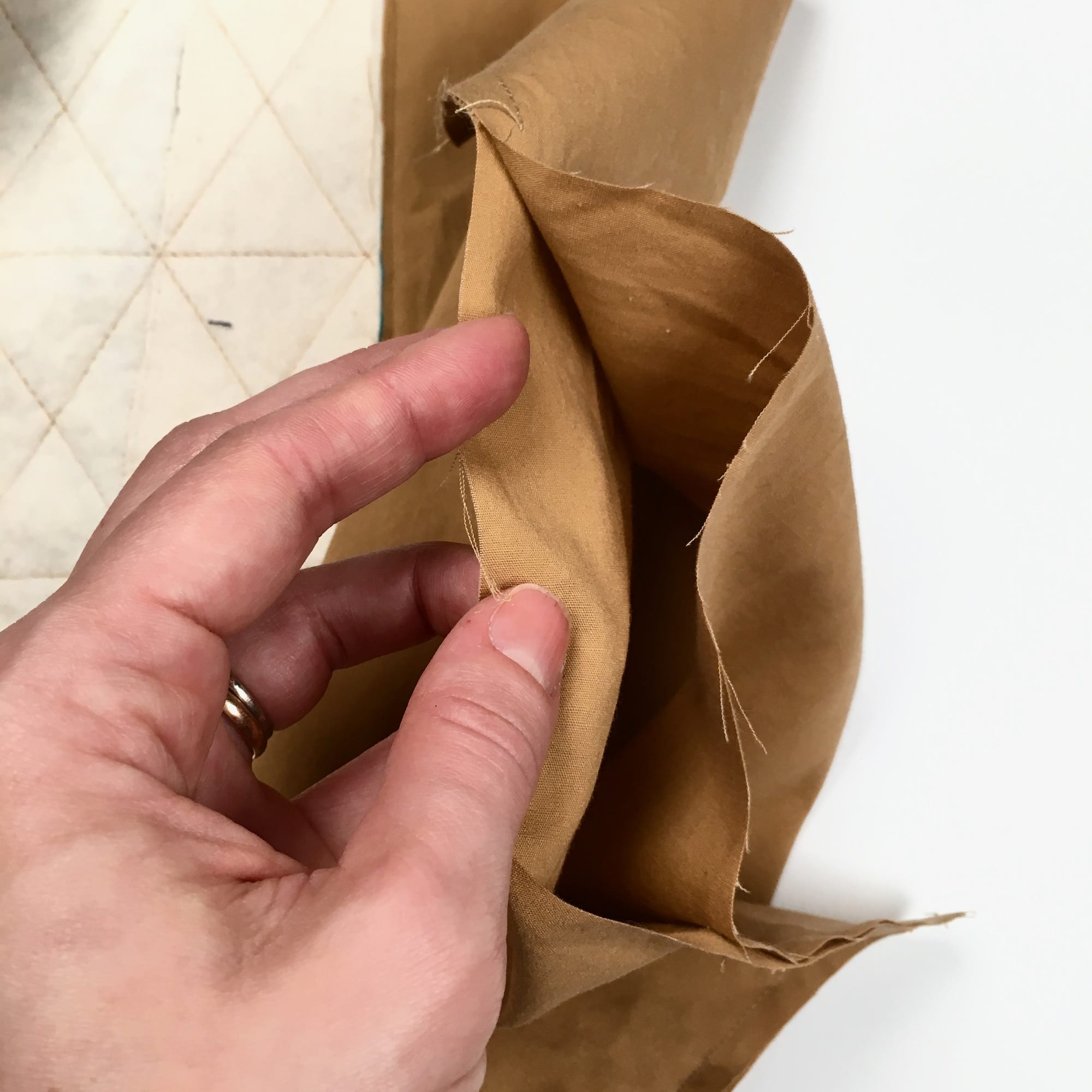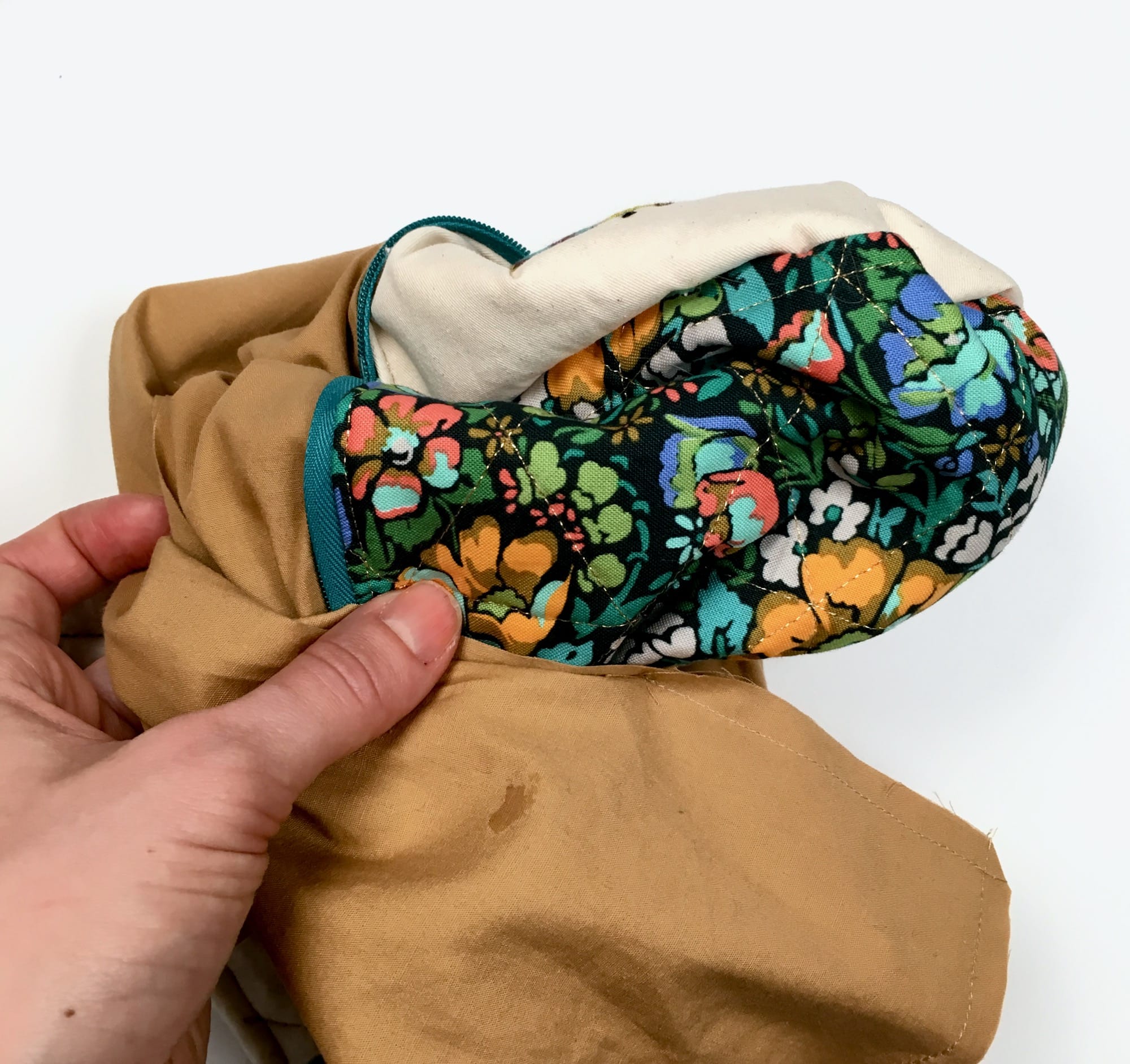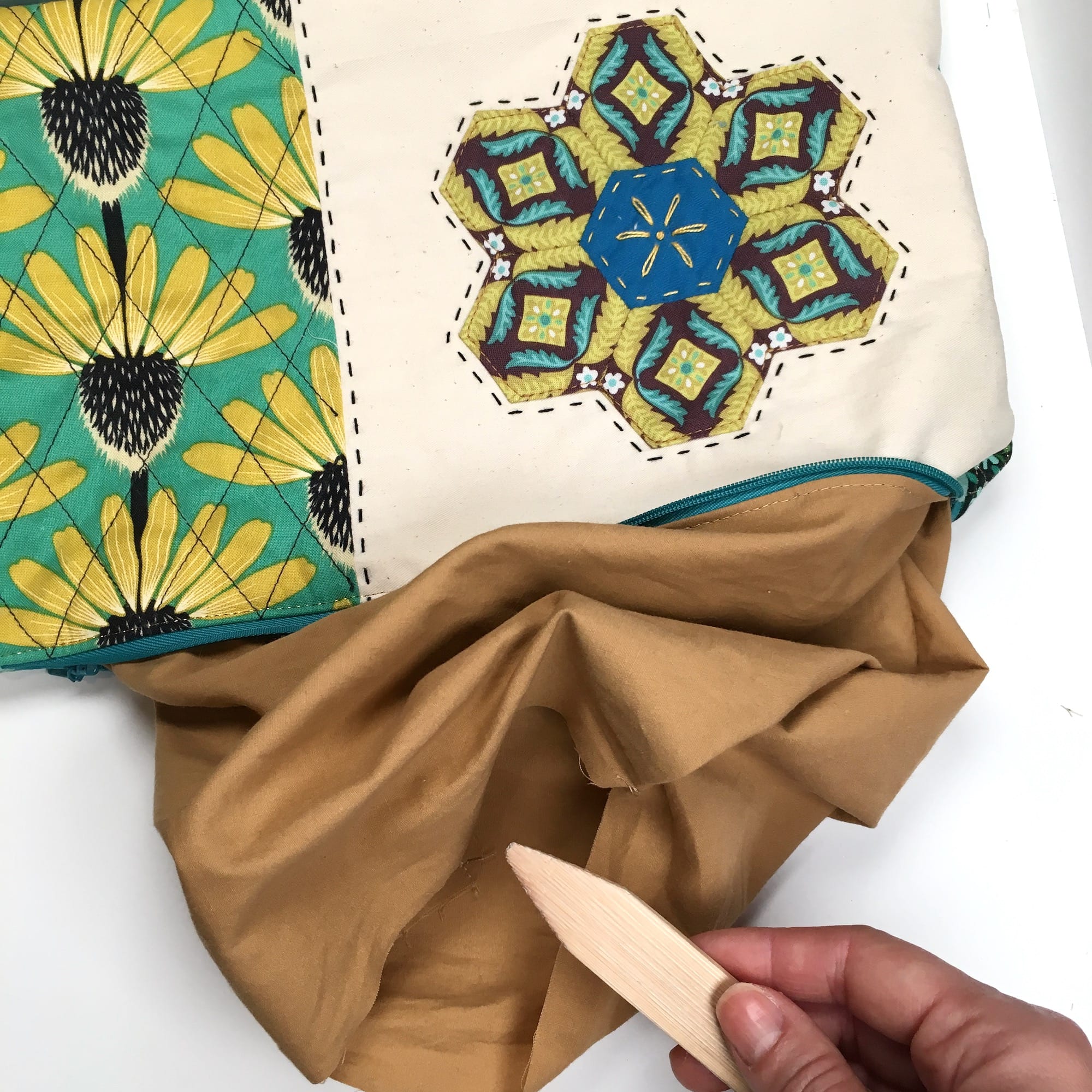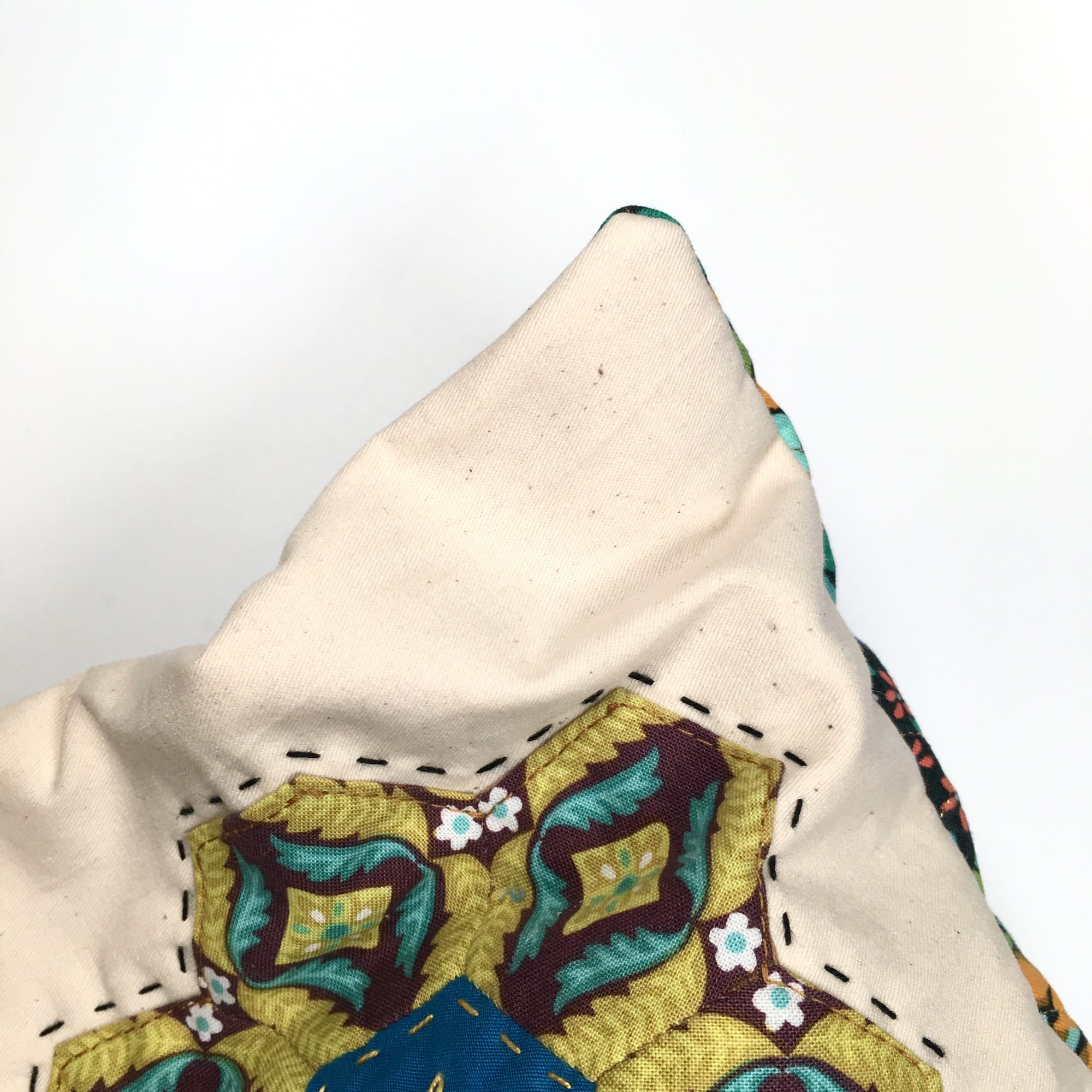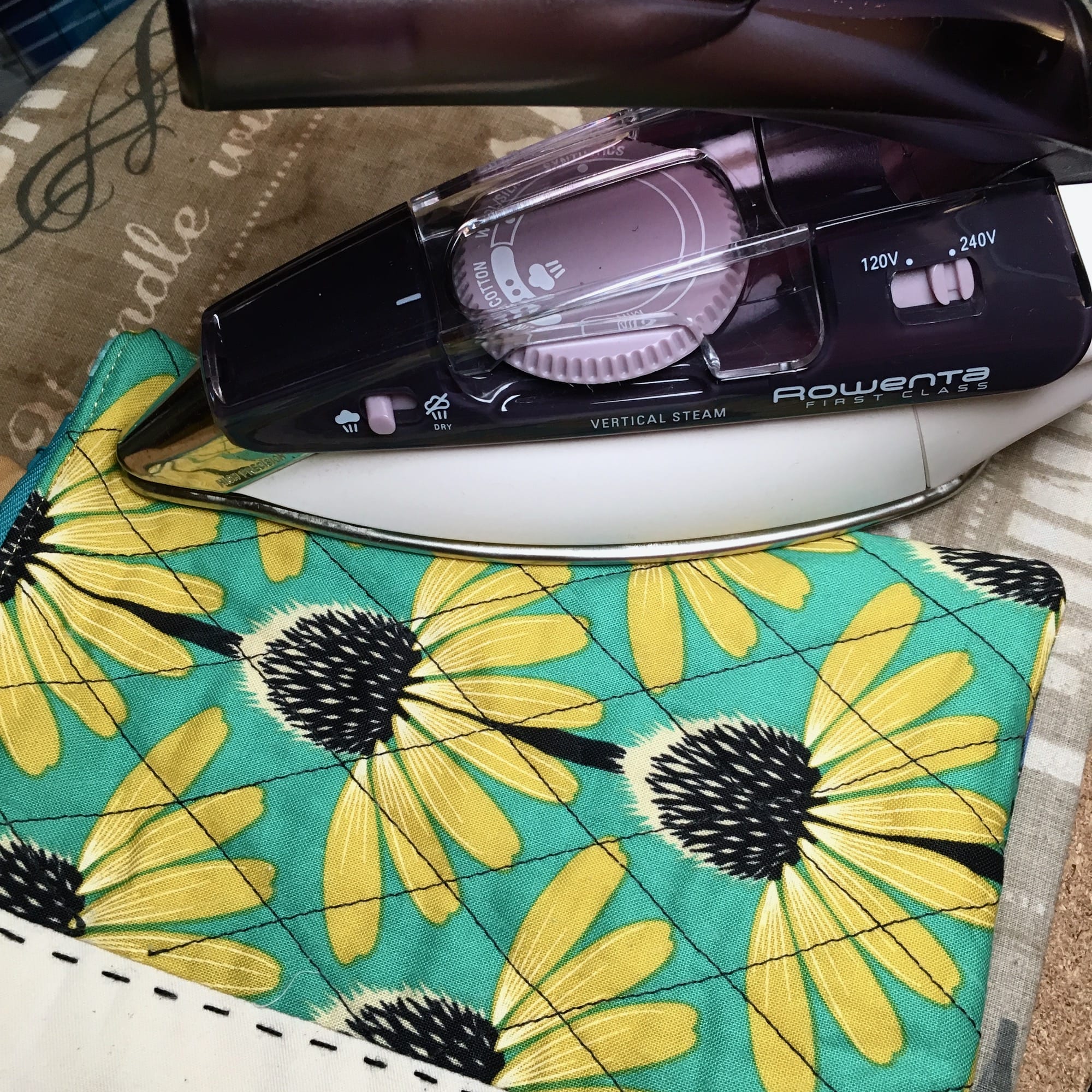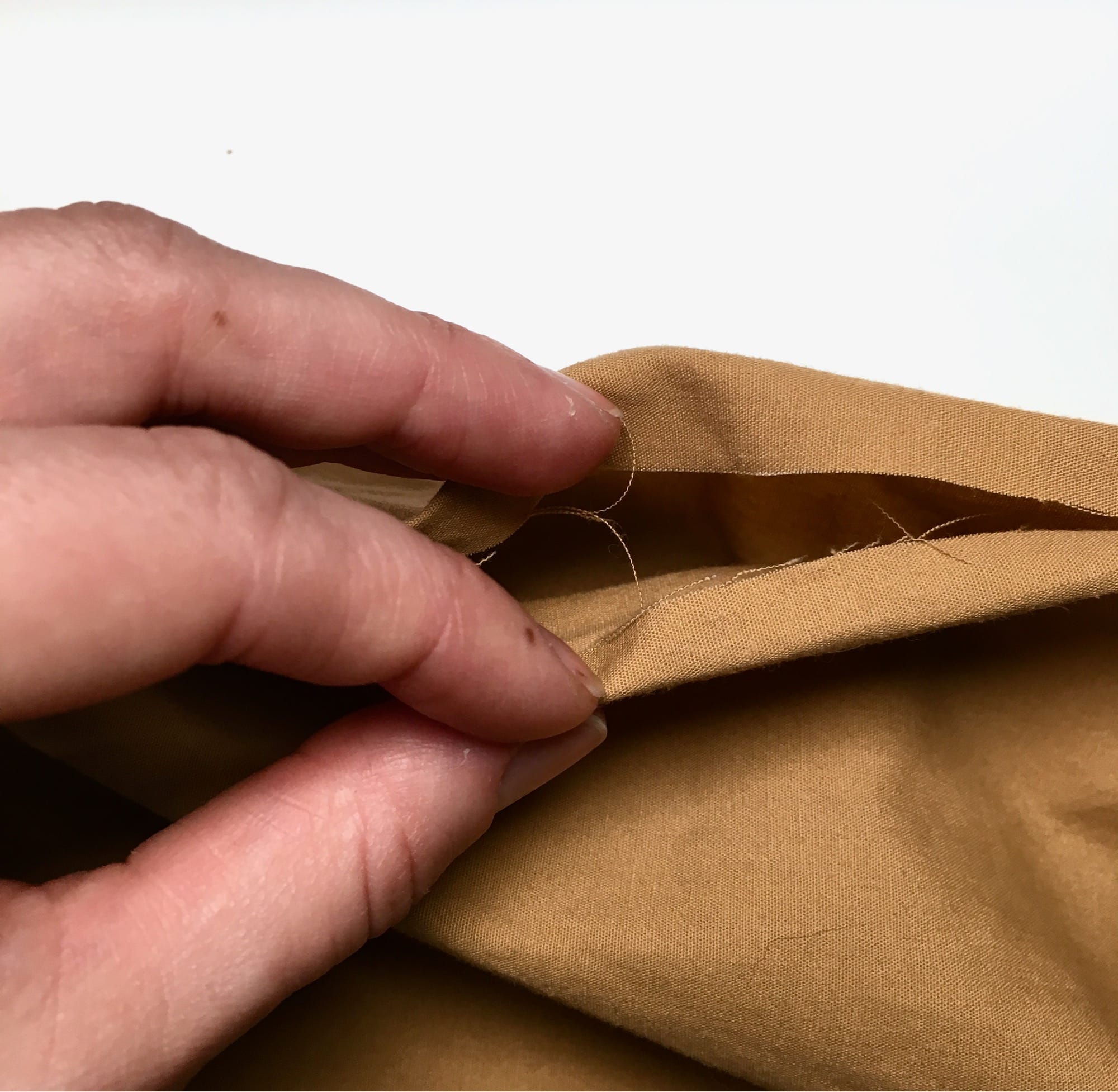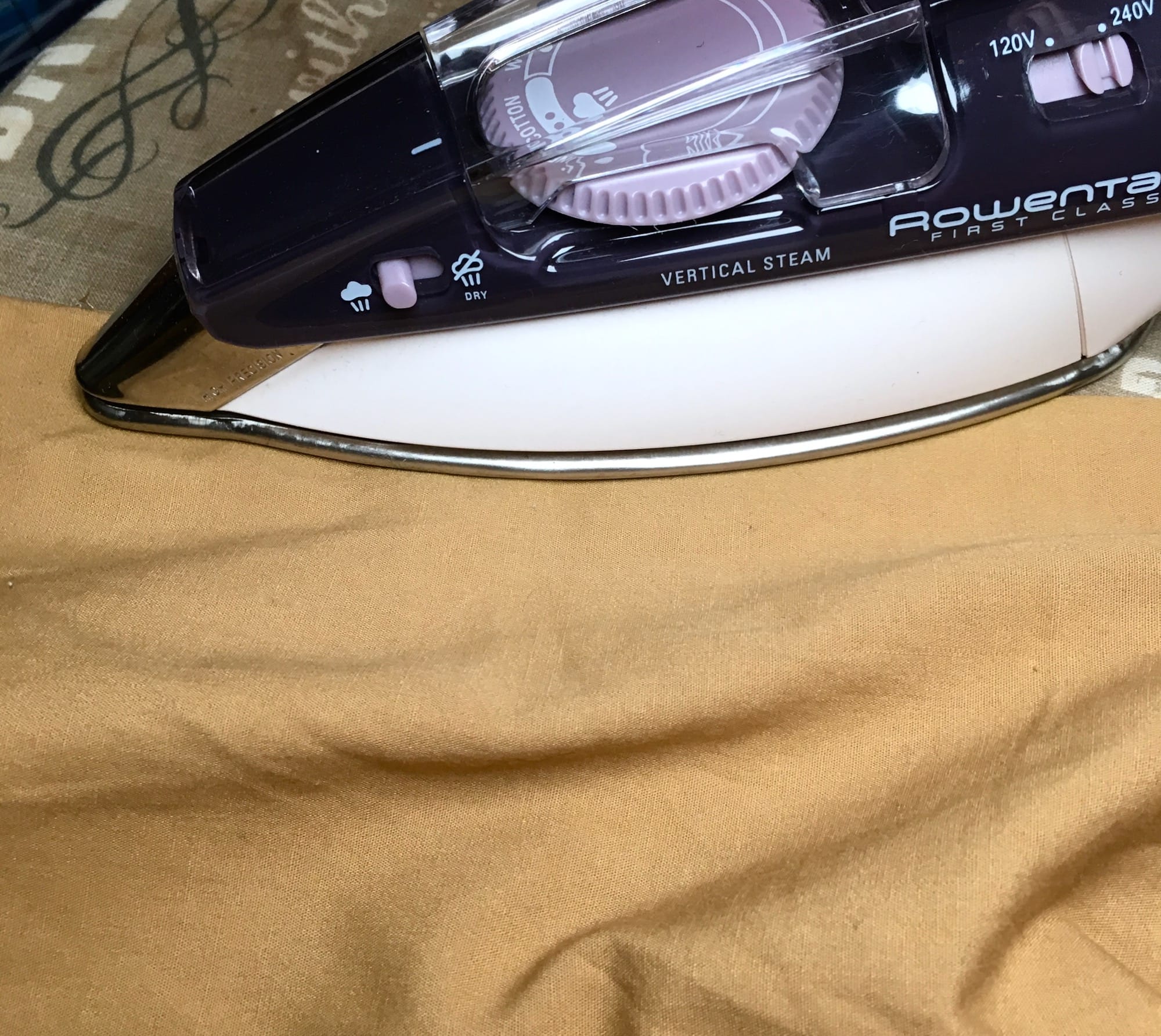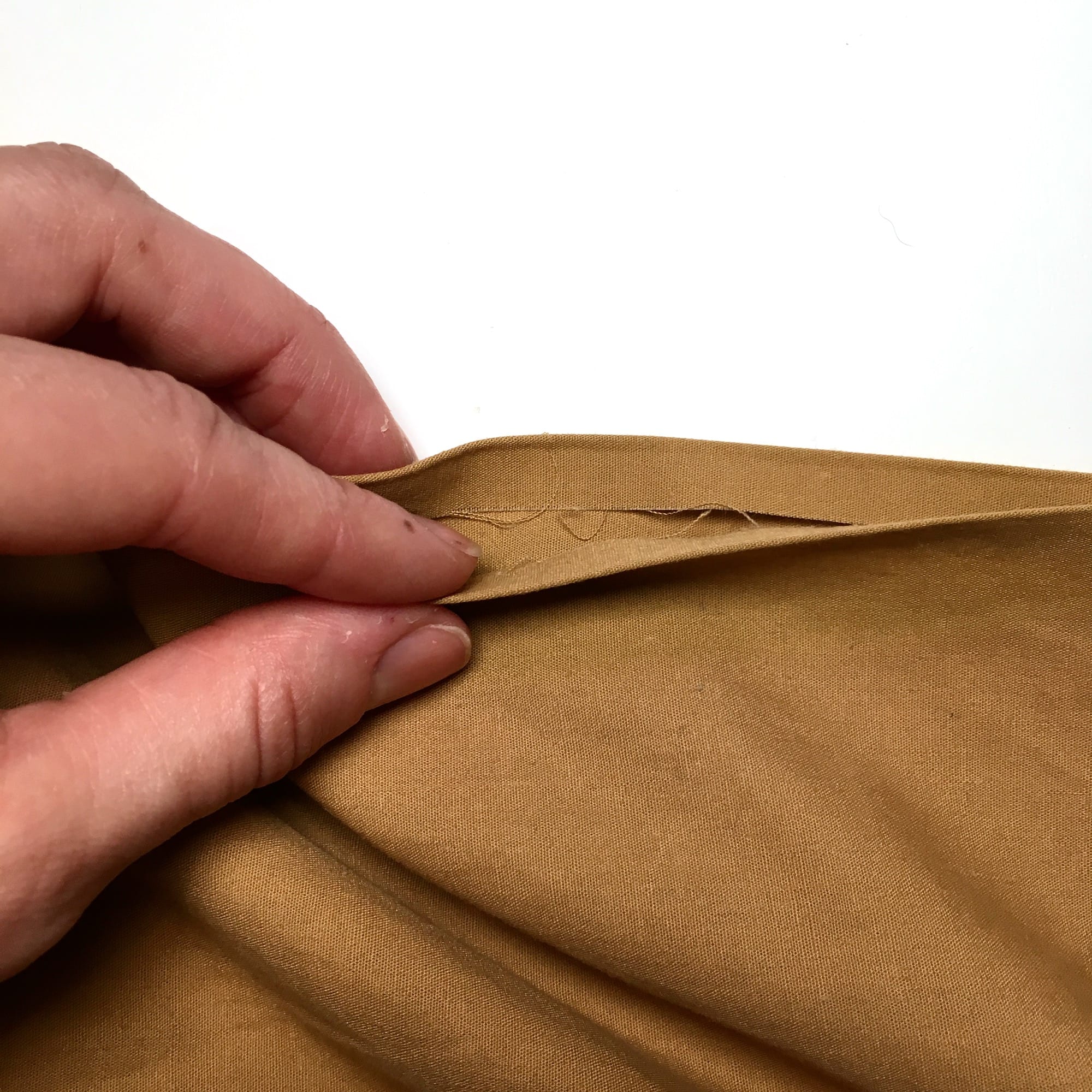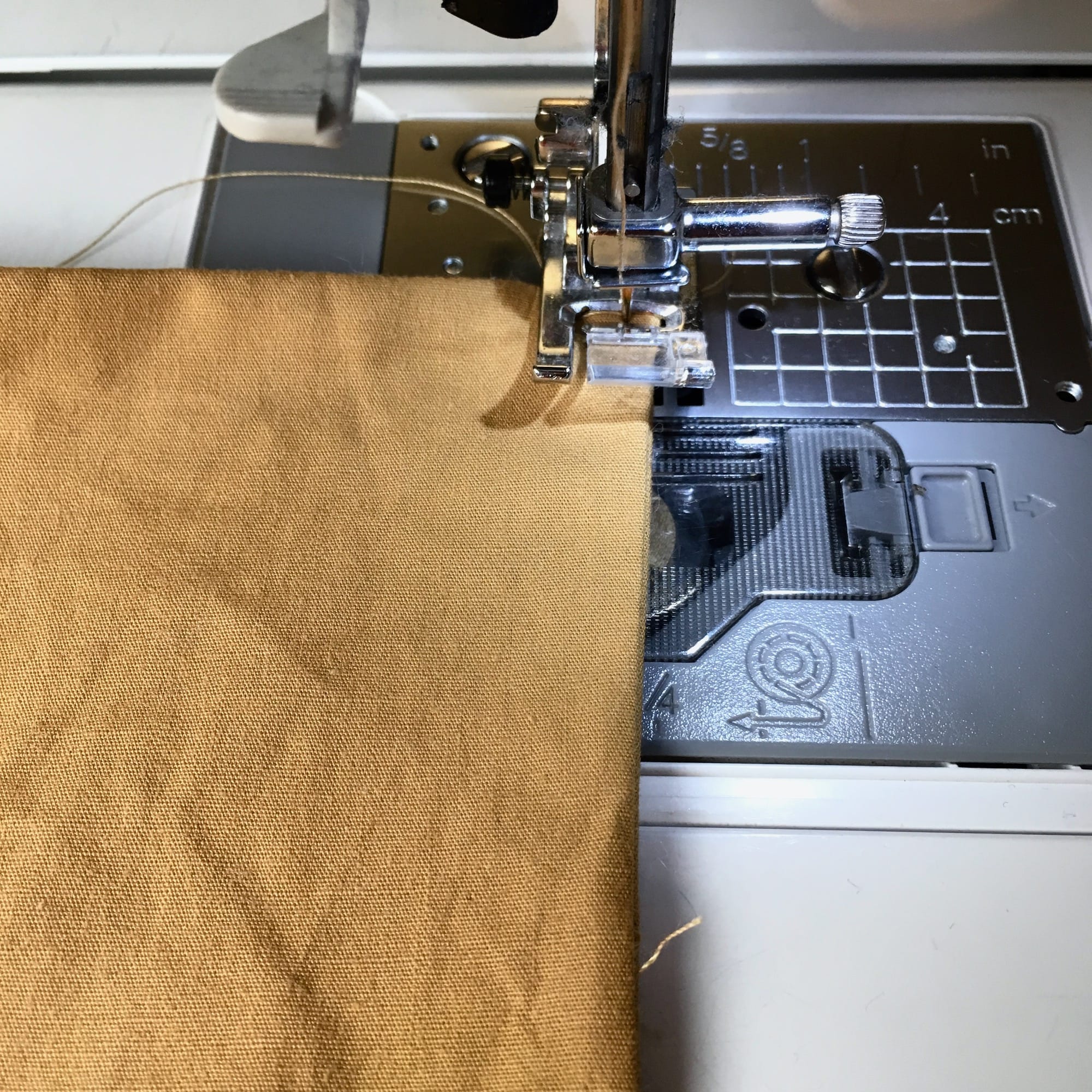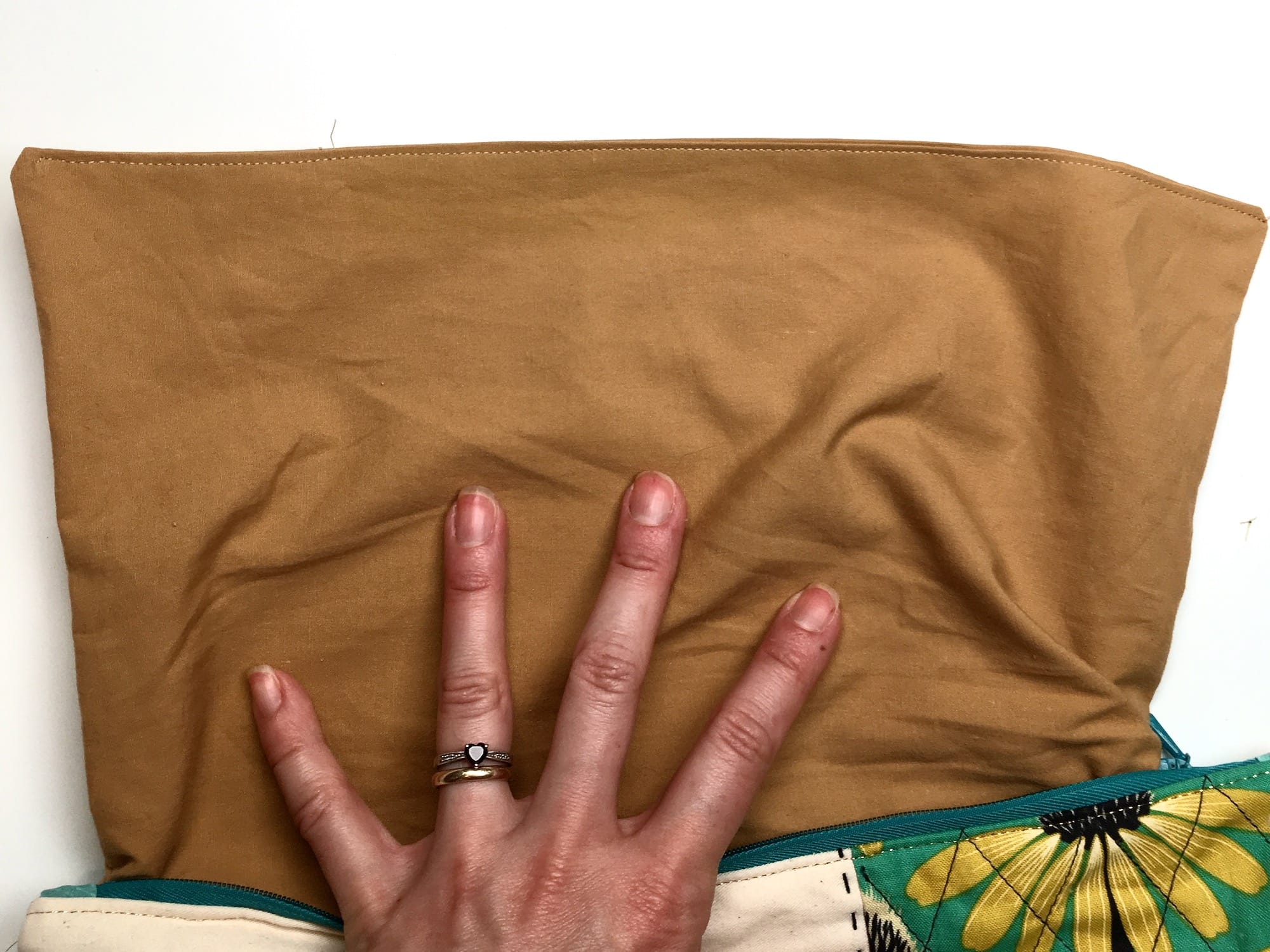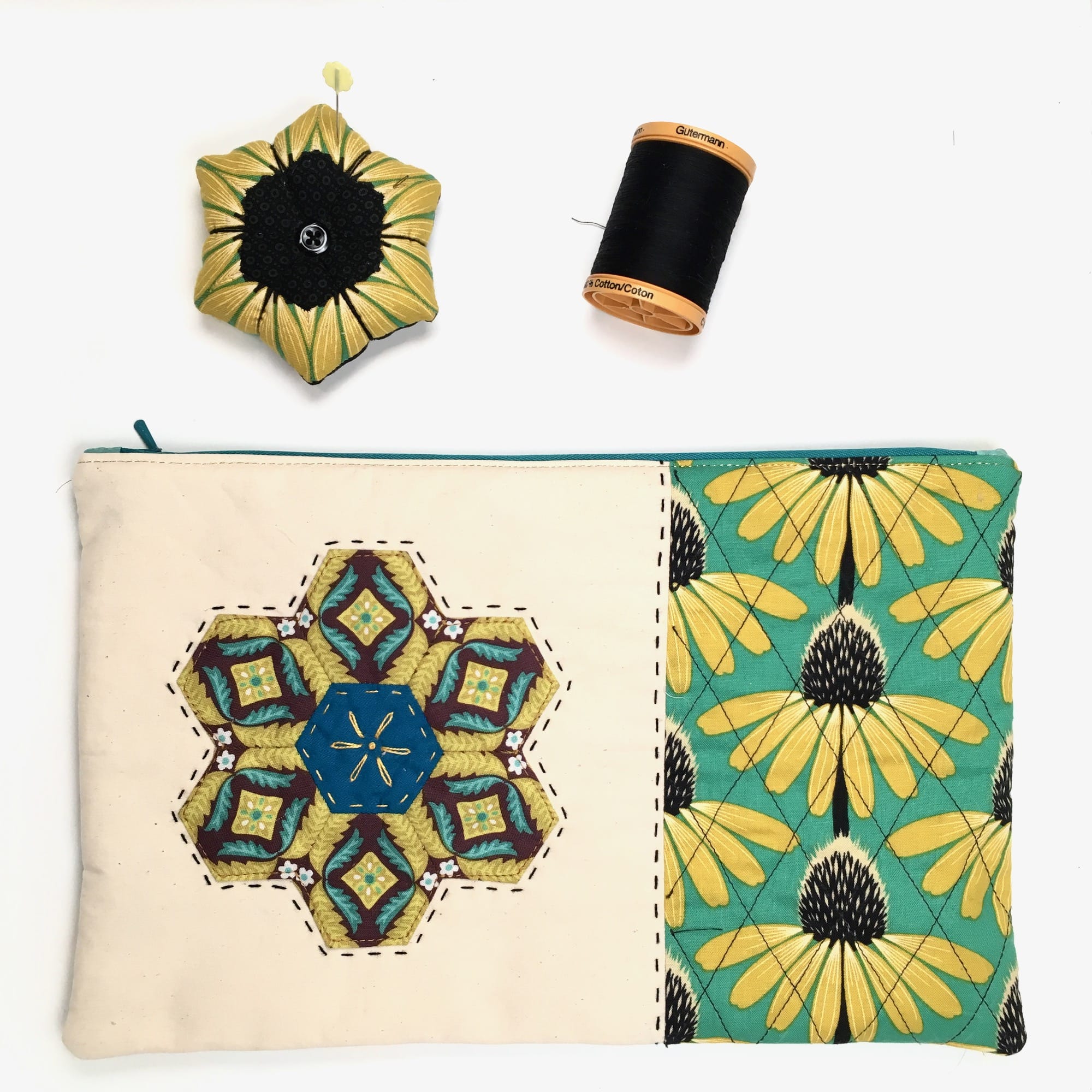I love making zipper pouches. Not only are they my go-to storage solution for stitching of all kinds, but they come together quickly and are fully customizable in size/shape. They are also great for featuring smaller scale stitching WIPs like embroidery or English Paper Piecing (EPP), and I can pretty much always count on them bolstering my sewjo when I need it.
However, I remember being terrified of them when I first started sewing. Undoubtedly, zippers can be intimidating. Still, determined to overcome my fear, I searched and searched until I gathered enough information from the all-knowing internet to try it.
The following process is my own accumulation of tips and tricks that have worked well for me over the years. There are countless ways, and undoubtedly some much better than mine, to install zippers. However, I have found this process removes my overwhelm and delivers highly satisfying, consistent results. I hope it helps you do the same.
Supplies
I have chosen not to include measurements in this tutorial unless relevant by way of example. The process here is meant to be universal regardless of the size of the pouch you are creating. In fact, this is the exact same installation process I use when creating pillow/cushion covers (minus the inner lining).
As such, I will put out a disclaimer that this particular tutorial is intended for use with standard square/rectangular external pouch shapes, though the process can be modified or adapted for other pouch styles. I advise that if this is your first zipper installation, start with something simple to boost your confidence before moving on to more complex endeavors.
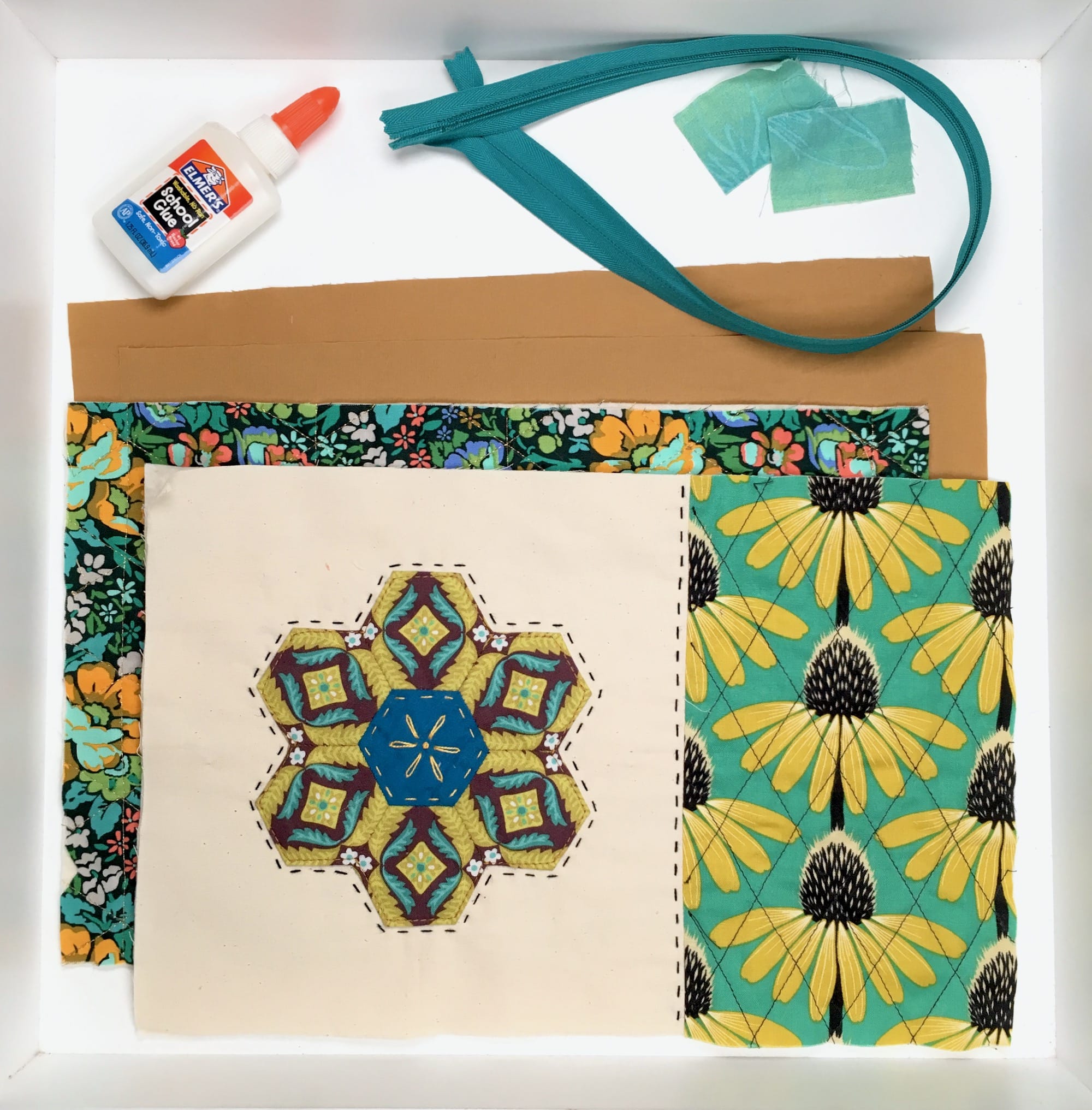
That being said, you’ll only need a few supplies for this tutorial.
- Two (2) external pouch panels of the same measurement (This can be as simple as a piece of fabric or as complex as quilted patchwork. I will be using quilted panels which give a bit more structure to the finished pouch, but do add a bit of bulk in the final steps. Just FYI.)
- Two (2) internal pouch panels measuring the same as the external pouch panels (I am using simple quilting cotton for this.)
- One (1) zipper at least as long as the longest edge of your pouch (I happen to be using an invisible zipper since it was the only one I had that matched the pouch, but the same process works for any zipper.)
- Two (2) fabric scraps at least 1” x 2”
- Washable liquid school glue (I am using Elmer’s but any washable brand will suffice. The glue will not be seen at any time as it will be hidden within the seam allowance, but using washable glue makes for easier repositioning and cleanup.)
- Sewing machine with a zipper foot attachment
- Straight pins
- Coordinating thread
- Fabric scissors
- NON-fabric scissors
- Ruler or measuring tape
One last thing before we begin.
I have endeavored to create as aesthetically pleasing a layout as possible with this post in order to enhance readability. As such, desktop users will notice that each step of the tutorial is staggered with an alternating text block and image. If the images appear too small at any time, simply click on the image and a full scale version will pop up.
I also advise reading through the entire tutorial before beginning. It isn’t a complicated process, necessarily, however, there are a lot of steps. Reading through beforehand will give you a general idea of the process before diving in.
Add Fabric Tabs to the Zipper
5. Using a hot, DRY iron setting, press the edge of the fabric tab to dry the glue. You might need to keep it in place for several seconds to ensure it dries. (Make sure the glue dries completely so that it doesn’t get on your sewing machine needle. I have done this dozens of times, and I have never had trouble with my machine, but just be mindful.)
8. Before continuing, you now have to measure the correct length of your zipper. Measure the length of the pouch panel, then trim the zipper itself to 1” less than the length of the pouch panel’s side. (In this case, my panel measured 12.5” so I trimmed my zipper to 11.5”.
Note that this is the length of the zipper itself, NOT the length including the fabric tab you just sewed on.)
Of Note:
Do NOT use fabric scissors to trim your zipper. Use a pair of kitchen scissors or paper scissors to cut through the plastic or metal teeth of the zipper.
Yay! You're ready to install the zipper!
Install the Zipper
Woohoo! One side of your zipper is already installed!
Hooray! You’ve installed your first zipper! Now let’s complete the pouch.
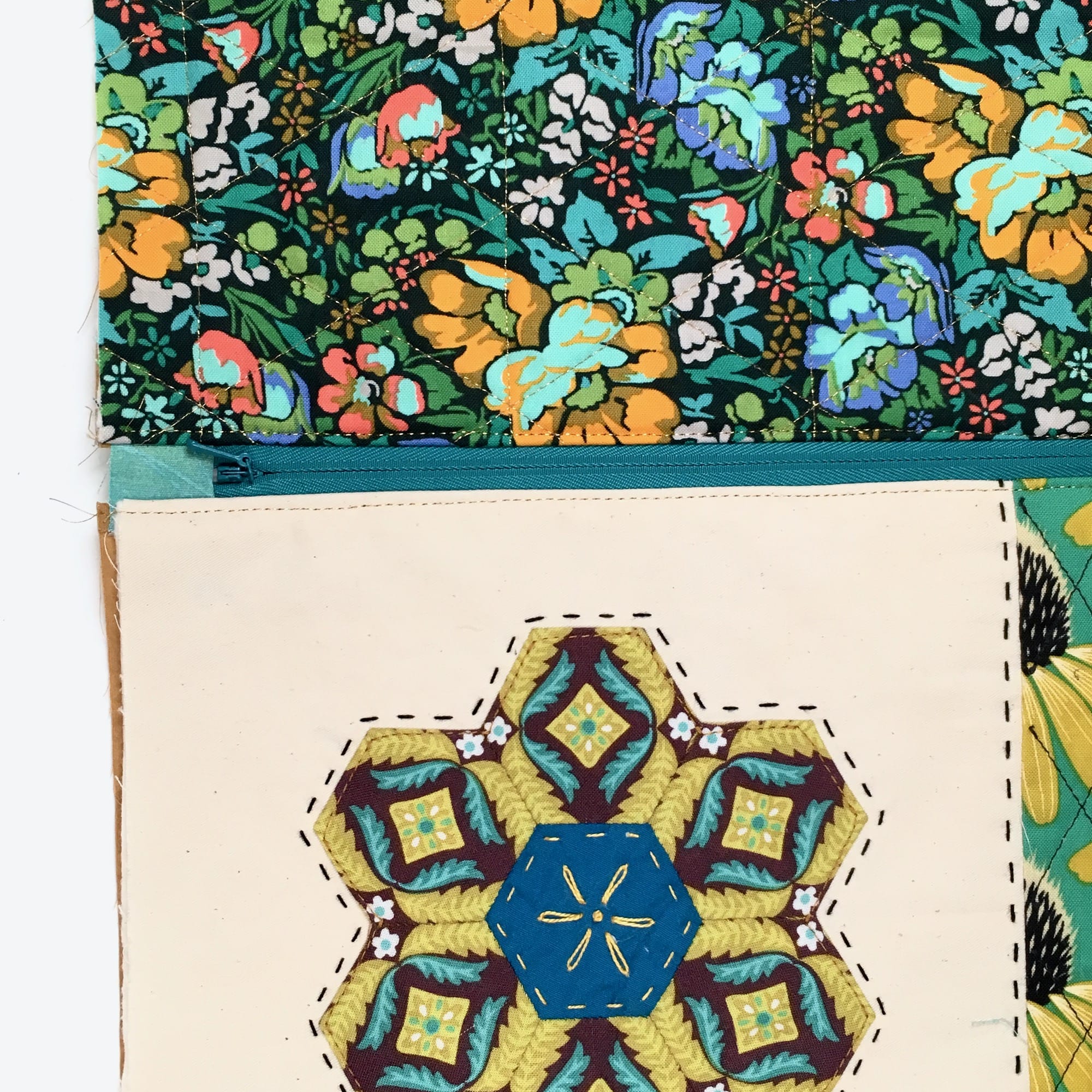
Complete the Zipper Pouch
Almost there!
Voila! You have a brand new zipper pouch!
Phew! That was A LOT, but I hope it helped break down the process into achievable steps. I’d love your feedback in the comments if you have any other tips or tricks that you have found make the process easier or more enjoyable. And, feel free to comment with any other questions you might have!
Don’t forget that you can always pin this post to Pinterest for easy access later.


